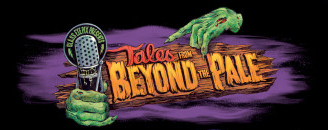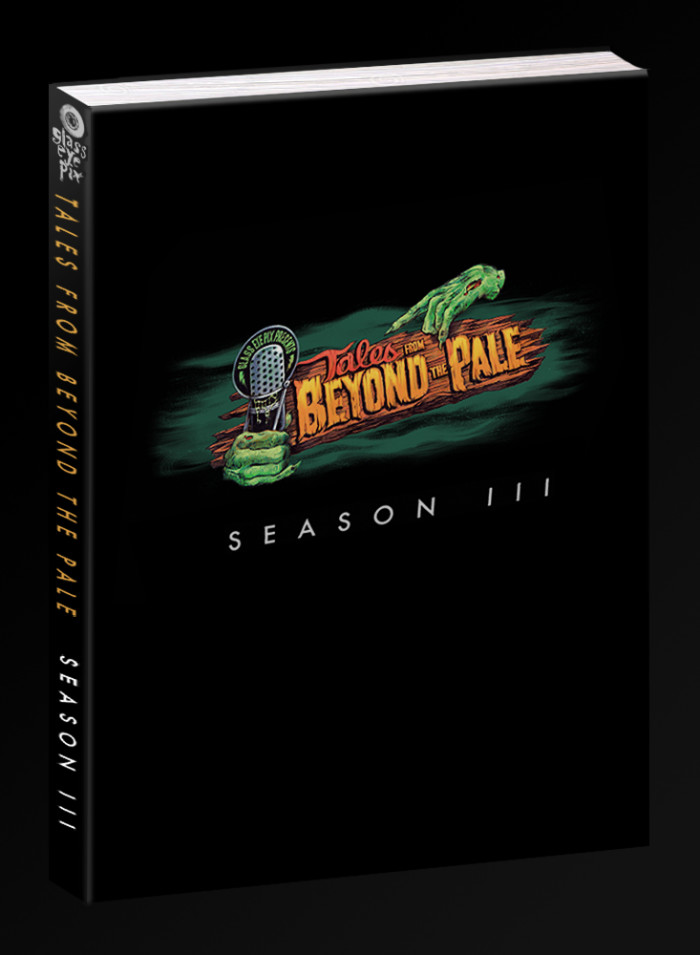Okay, okay….
So I know I said that I was taking a break from Midnight Cinephile for a while, but something has come up that I just had to break silence for:
LARRY FESSENDEN & GLENN MCQUAID (2015 USB, 10 Episodes, Approx 30 mins each, Created by Larry Fessenden & Glenn McQuaid)

Tales from Beyond the pale returns to the studio with 10 more original stories from genre favorites Stuart Gordon and Eric Red, Tales regulars Jeff Buhler and Joe Maggio and a host of exciting guests as well as McQuaid and Fessenden. Downlaod-able or available as a USB and hardcover booklet featuring original artwork by Graham Humphreys.
It’s been two years since TALES FROM BEYOND THE PALE clawed its way into the ears of fright fans, with select live outings to satiate the interested while Season Three of the radio play series was in development. However, luckily for purveyors of audio horror, the wait was not in vain, as the months of development have led to TALES strongest season to date, providing bold, wickedly entertaining stories that stir up one’s imagination with mischievous glee. And furthermore, with an assembly of terrific performers and storytellers by their side, there’s an inherently unique air about this season of TALES that certainly separates it from season’s past, offering a structural and tonal continuity that impressively feels much more carefully curated than previous iterations.
While previous TALES regulars such as Ashley Thorpe and THE PUMPKIN PIE SHOW’s Clay McLeod Chapman are absent in this go-around, perhaps Season Three’s strongest asset is its roster of writers and directors, mixing genre heavyweights alongside carryovers and fairly newcomers. Maintaining a brilliant variety of sordid subject matter, the influence of producers Glenn McQuaid and Larry Fessenden gives each production a fairly theatrical quality which keeps the tone from jumping between melancholy to gruesome to cerebral; in essence, TALES keeps an ear towards horror that’s emotional but nonetheless entertaining. And furthermore, even with that theatrical flair, it’s refreshing to see the audio medium represent each artist’s voice, with no single tale ever feeling monotonous or familiar to those surrounding them.
Given the two year wait between seasons, it’s only appropriate that TALES FROM BEYOND THE PALE’s third season starts off with a bang, offering a RE-ANIMATOR reunion in H.P. Lovecraft’s “The Hound,” written by Dennis Paoli and directed by Stuart Gordon. With music by Richard Band and a cast that includes RE-ANIMATOR’s Barbara Crampton, DAGON’s Ezra Godden and KING OF THE ANT’s Chris McKenna, “The Hound” is Gordon in top form, allowing his stellar performers (especially a particularly against-type Crampton) to bring Paoli & Lovecraft’s depraved tale come to life in frightening fashion. Furthermore, the production value is rather fantastic, punctuating every macabre moment and providing depth to Lovecraft’s universe and its many creepy creations.
From there, comic book mastermind Brahm Revel offers “Junk Science,” which re-unites STAKE LAND stars Nick Damici and Michael Cerveris in an outer space tale that carries strong dialogue, savvy personality and a surprisingly emotional finale. “Junk Science” relies much on the production-heavy science fiction, but the story is so rooted in the relationship of our protagonist and his A.I. that it never falls short of engrossing. Afterwards, McQuaid himself steps up to the plate with “The Ripple at Cedar Lake,” a tale of colliding dimensions that is a stellar listen and features performances by WENDIGO’s John Speredakos, TALES vet Matthew Huffman and THE PUMPKIN PIE SHOW’s Hanna Cheek. “Cedar Lake” makes the most of its fun, clever concept, with every performer enthusiastically embracing the utter insane direction that the story sends them spiraling towards.
However, the fourth entry vies for the possible highlight of the entire season as genre journalist April Snellings’ “Food Chain” offers such a strong sense of humor, character, emotion, nail-biting gruesomeness and karmic justice that it feels as if it could stand toe-to-toe with the finest words of William Gaines. Luckily, Snellings’ superb script is elevated by great performances by Fessenden, THE BATTERY’s Jeremy Gardner, SOUTH OF HELL’s Drew Moerlein, POULTRYGEIST’s Jason Yachanin as well as JUG FACE’s Sean Young and Lauren Ashley Carter (not to mention an inspired vocal creature performance from McQuaid). And the foley work and music on display is rather fantastic, helping to add an extra dimension to an already strongly defined world.
AUTOMATON director James Felix McKenney’s “The Tribunal of Minos” is also an impressively entry as well, an all-too-human character piece starring Angus Scrimm and Mizuo Peck following a pair of Americans trapped inside a mythological labyrinth. It’s a fairly predictable story and yet one that works by the director’s decision to keep the dialogue intimate and, while politically present, far from heavy handed or biased. Meanwhile, UNTIL DAWN scribe Graham Reznick’s “The Chambers Tape” may be the weakest of the set, but if only as the cost of being the most ambitious: by presenting the tale as a therapeutic tape of sinister origins (narrated by Misha Collins), the pacing of the story drags through its first fifteen minutes, while the going finally gets good and unsettling in its latter half.
Next up, Fessenden joins the fray as writer and director of “Natural Selection,” which cleverly plays off Dominic Monaghan’s real-life persona of adventurer and reteams him with his LORD OF THE RINGS co-star Billy Boyd in a story about an animal discovery gone monstrously wrong. With strong supporting performances from Pat Healy and James Ransone as well as terrific sound design, “Natural Selection” explores Fessenden’s inherent talent for crafting human tales in horrific scenarios, and this entry certainly is no different. Following that is TALES vet Jeff Buhler’s “Guttermouth,” a fascinating and engrossing story about an unhappily married man who becomes obsessed with woman whose voice emanates from his drain pipes. Offering a foreboding atmosphere and a Stephen King-esque edge to the supernatural element, “Guttermouth” is another highlight of the season and includes fantastic performances from Joshua Leonard, Heather Goldenhersh, Molly Bryant, Mark Kelly and Rocco Buhler.
One peculiar TALE among the bunch is esteemed horror scribe Eric Red’s “Little Nasties,” although the issues lie not with the story but with the medium. As a radio play, “Nasties” is hilarious, creepy and utterly brilliant in concept and features an exceptional ensemble of all ages (with special note going to a particularly versatile turn from writer Jack Ketchum), but nevertheless, the story seems much more suited for a visual medium, especially the chaotic third act in which one’s imagination can’t quite offer the satisfying pay-off that the premise deserves. And TALES ends strong with an exceptionally twisted story from BITTER FEAST filmmaker Joe Maggio called “Cannibals,” the title of which carries a biting (no pun intended) double meaning as a story who two filmmakers (played by Vincent D’Onofrio and James Le Gros) whose taste in film is much more similar than their taste in food. Essentially a one-act, dialogue-driven play, “Cannibals” game of cat and mouse is a gripping one and ultimately satisfying as each character’s true nature is gradually revealed.
Overall, with a murderer’s row of horror voices and actors involved, not only is TALES FROM BEYOND THE PALE’s third season incredibly worthwhile but a masterful example at how audio production can be used effectively within the genre. With impressive sound design, mixing, foley work and editing, this anthology radio play series plunges the listener into its many nightmarish worlds effectively and with unflinching resolve. So if you’re looking to creep out your fellow carpoolers or if you just need a scary story for a dark and stormy night, look no further than this latest batch of TALES FROM BEYOND THE PALE.
Larry Fessenden lives and breathes horror. Besides writing and directing a box-set worth of his own indie scare fare, he’s also acted in any number of fright flicks, mentored young horror mavericks like Jim Mickle and Ti West, and worked on the screenplay for this year’s slasher-movie-inspired video game, Until Dawn. One of his most interesting contributions to the genre, however, is the horror podcast Tales From Beyond The Pale, whose third season premiered on Black Friday. Produced and developed by Fessenden with regular collaborator Glenn McQuaid, the series resurrects the radio drama of early last century: Each episode is a one-act horror play, gamely performed by voice talent both recognizable and not, and written/directed by various artists of the genre, with Fessenden dropping in before and after to play old-school host. The content varies in quality, but especially in tone: Some episodes aspire to the creaky theatrical style of an old Boris Karloff segment, while others are distinctly modern in adult subject matter and language. What links them all, beyond uniformly excellent sound design, is an earnest interest in using pure audio techniques—foley effects, dialogue, creepy music—to elicit unease and create a whole world within listeners’ ears. The best of the bunch, such as season one’s unnerving surgery story “The Conformation,” serve as good reminders that what you can hear and imagine is sometimes much scarier than what you can see. It’s not surprising that Fessenden, a one-man champion of all things frightening, would understand that better than most.
Okay, okay….
So I know I said that I was taking a break from Midnight Cinephile for a while, but something has come up that I just had to break silence for:
What’s Tales From Beyond The Pale you ask? It is a series half hour radio plays created/produced by Larry Fessenden of Glass Eye Pix. April was asked to pen and episode for Season 3 and oh man has she delivered! I immediately downloaded the episode and let it seep into my ear holes.
The story involves four good ol’ boy hunters who are hired to hunt a very particular hairy beast haunting the woods. Obviously we’re talking Bigfoot here, but I will not divulge anything further because this story is just so damn fun. All the voice actors (Including Fessenden and Sean Young) are top notch. The dialog is crisp and hilarious and works in perfect tandem with the epically awesome gross out scenes.
I actually listened to this twice in a row because I enjoyed it so damn much! It also gave me a hankering for more Bigfoot related entertainment. Maybe some Boggy Creek is in order…..
I truly hope that April is able to write more episodes. She is a truly gifted writer and I can’t wait to hear what she comes up with next!
Even though some horror fans sadly may not know it, the world of independent horror does extend outside of its cinematic efforts. Whether it’s self-published e-books, live reads, stage shows, interactive experiences or genre-friendly music, there’s a whole world of horror that lives on the fringe and can be found fairly easily. Yet one of the most intriguing avenues of independently produced horror can be found in the realm of audio, and those pioneering the charge are none other than NY-based independent horror gurus Larry Fessenden and Glenn McQuaid.
Outside of their excellent work behind the camera, Fessenden and McQuaid’s radio play series TALES FROM BEYOND THE PALE just debuted its third season, ripe with exceptional audio stories from the many frightful friends of Glass Eye Pix. Recorded in the two years since Season Two, betwixt several live engagements including two back-to-back showstoppers at the Stanley Film Festival, this season of TALES FROM BEYOND THE PALE offers stories from the likes of RE-ANIMATOR’s Stuart Gordon & Dennis Paoli, THE HITCHER’s Eric Red, BITTER FEAST’s Joe Maggio, UNTIL DAWN’s Graham Reznick, acclaimed genre journalist April Snellings and many more, including Fessenden and McQuaid themselves. Shortly following their amazing performance at the 2015 Stanley Film Festival, FANGORIA caught up with Fessenden and McQuaid to talk TALES FROM BEYOND THE PALE Season Three, their live performances and more petrifying projects from the pair…
FANGORIA: Last year, you both brought the house down at the Stanley Film Festival, with many festgoers praising TALES as one of their highlights. When exactly did you both know that TALES would return for the 2015 edition?
LARRY FESSENDEN: I was actually at Stanley during its first year with a film called BENEATH that I was premiering there, and I had just the best time there. In the first year, pretty much everybody was staying at the main hotel, and I was talking to Landon [Zakheim], one of the programmers, and I think I said, “Geez dude, if you’re thinking of doing these immersive events and games and shows like THE PUMPKIN PIE SHOW, you guys should consider doing TALES.” Right then, he lit up and said, “Let’s do it.” So we went and did TALES live last year at Stanley, and that went well enough for us to be asked back to do it this year.
FANGORIA: At what point did you decide what you would be doing with the stories, especially considering how they tie into one another?
GLENN MCQUAID: We always feel as if we’re writing right up to the event, even changing and tweaking things right before the performance. But I think I was watching KEY LARGO on TCM and I was inspired how there was only one setting and this crew, and thought that could be used well with a creepy interior. But I had also been wanting to do something with a ventriloquist and a creepy doll for quite some time, so I started talking to Larry about it. I’m not sure where the idea of making the second story a sequel was, but that came out of the process of working together.
FESSENDEN: Yeah, I just got this perverse notion that, by being the host, I can link together the stories that we perform live. For example, with the live show that we did in L.A., we linked them by saying that they’re all news events, so they weren’t really connected at all except by having the host reading the newspaper. But I think the idea of a direct sequel came to me when Glenn told me his story would be set in the ‘20s, and I thought, “Wouldn’t it be cool to jump off that story but in a modern way?”
Also, there’s this notion with sequels that the story won’t be as good because the ideas are already there, yet there’s a certain affection you have when the villain shows up again. So I built it up to where the vengeful doll makes his appearance again, as to work off the excitement that the listener might have in spite of the story. And when we’re doing these live events, the audience is well-aware of the genre that we’re living in and the variations on these stories, since there’s no images we need to create. So we tell ghost stories and stories of alien abduction and whatnot, but we’re aware of how the genre has worked before and we play off of that.
MCQUAID: We also wanted it to be a bit of a surprise that Larry’s story was a sequel, so we really don’t make any hints to the relation until about maybe ten or fifteen minutes into the tale. It was just a nice way of unfolding the evening for the audience.
FANGORIA: Was there anything you had to adjust or change between your performances at Stanley or, at this point, did everything feel like business as usual?
FESSENDEN: It never feels like business as usual. [laughs] Our Stanley 2015 show was actually the first live performance in years that we felt like we had a firm handle on the proceedings, because it’s really difficult to land in a town and basically have twelve hours to put on a live show. In fact, in many cases, we’re meeting the actors for the first time at these events, and that’s aside from all the technical hurdles. But even with a firm handle on things, there’s still much that we learned from our Stanley performance as well.
MCQUAID: The one thing that I have learned from this year’s Stanley performance is that we are getting better at taking the show on the road. We’ve had hiccups along the way, and certainly when it came to Season Two of TALES FROM BEYOND THE PALE, but I’m certainly pleased and proud with the shows that we’ve pulled off. It’s just, as Larry said, with the shortened relationship with director and actor and also having to lug the equipment in and out [of the venue], it can become quite the ordeal sometimes.
FESSENDEN: We also have to give credit to our crew, including Graham Reznick, who has always been by our side and is a master of sound, as well as our foley artists, Chris Skothdopole and Tessa Price, who have really developed a knack for the trade. We’ve been doing this together for so long that our minds have basically melded, so they’re always on the same page, which is fun and helpful.
FANGORIA: Doing a vocal performance is a different process than a physical performance, to be sure. Considering that as well as the on-stage dynamic, how do you approach embodying the characters that you perform in addition to your hosting duties?
FESSENDEN: Well, I can’t say that it’s the hardest thing to do in the world, since that would have to go to fighting wars and building computers, but it was hard to keep track of the characters and sometimes until the very last minute. Luckily, Glenn pushes me as a performer and he’s right to do so, because that’s how I can inject my sense of humor into some profound psychological realism. But you have to really lock yourself in so that you can bounce back and forth from the characters. And one thing I had to remind myself of was that the doll character was a part of the ventriloquist’s experience, so I had to tighten up my mouth to realize that.
But these are the joys of hammy acting which I, of course, specialize in! I do remember doing the voices for my son and he went, “Oh, so you’re just going to do a bunch of cliched voices?” and I said [in the dummy voice] “Shut up, kid!”
FANGORIA: You guys recently performed at Fantasia as well. Do you have any future performances to look out for that you can tell us about?
FESSENDEN: We are booking a few upcoming dates, but we’re certainly not working the circuit. [laughs] The live version is a part of our agenda to just make cool, off-beat entertainment to remind people just how wild these stories are. I don’t think we can announce anything just yet, though.
MCQUAID: Besides, the live version of TALES has given me a lot of confidence as a writer because we’ve certainly been more active than we have in the past. Between being in the studio and being invited to festivals like Stanley and Fantasia, it’s like we’ve become a part of this machine that is pushing us as writers to get these stories out of us. I’ve written about 5 or 6 TALES and many of them have been under-the-gun, but I’m fortunate that this has been such a great ride.
FESSENDEN: At the same time, we’re always looking for new collaborators and it’s been exciting to go to film festivals where TALES are in the air and corner a filmmaker to say, “You gotta try your hand at this!” Usually, they get very excited and that’s when I start pursuing them. For Season 3, the collaborators who joined us have been very big and as much as I love the challenge of writing these stories under the gun, it’s been equally refreshing to seduce others into TALES. So we have some old collaborators, some new collaborators as well, including April Snellings, who we brought into the fold and that story is dynamite.
FANGORIA: Is there any horror subject or subgenre that you would like to tackle in future TALES seasons or shows?
MCQUAID: One of the things that is great about doing TALES FROM BEYOND THE PALE from an artist’s perspective is that we can go basically into any direction or do anything we want and we’re not necessarily limited by our budget. So the sky is the limit, and my own piece for Season 3 and deals with a ripple in the space/time fabric, and is best described as a sexual/bi-sexual science fiction noir. So we’re having fun with mixing tropes, and that freedom excites me more than any specific thing or creature.
FANGORIA: If the opportunity arises, would you be willing to expand the TALES brand into other avenues, whether it be television, comic books or an anthology film?
FESSENDEN: Glenn and I could never leave anything well enough alone, so if the opportunity arose, certainly with comics since I love that idea, I’d say sure. But we’re sorting out the future of TALES with the time that we have and, frankly, our budgets. If we had our say, we would have taken over television and developing TALES figurines.
FANGORIA: Do you guys have anything else that’s immediately coming out? Is there any hope for another installment of I SELL THE DEAD, even possibly in the TALES universe?
MCQUAID: I do have a few feature scripts behind me know that I’m eager to get to the right people. So I’m super keen to get rolling on a few of these scripts that I’ve been working on in the past few years and I’m super proud of them.
FESSENDEN: I also have a new feature I’m pretty determined to make in the next year, and also, Glass Eye Pix is still looking to produce stuff. We have a couple movies that shot over the summer, and 2015 is our 30th Anniversary, so we have a Blu-ray of my films that is out now as well as a couple of other things.
MCQUAID: As for I SELL THE DEAD, the idea of a TALES sequel is interesting but I do have a feature script for a sequel that is really a lot of fun and, as Larry said, we can’t leave well enough alone with the characters of Blake & Grimes. It’s certainly interesting to me to do something else with that story, but at the moment, I’m still convinced that this script can be made into a feature as well. But we’ll see; I don’t want to jinx anything.
FESSENDEN: And I don’t think it’s jinxing anything to say that Ron Perlman has read it, as well as Dom [Monaghan] so it’s all about lining up the stars and figuring out the financing. Making movies has become more difficult, and while making a sequel certainly has the following of the original movie, it also comes along with certain expectations. The first film was shot in Staten Island on a low budget, and with the sequel, we wouldn’t go crazy and lose control. But we’re all ready for it and just waiting for it to happen.
MCQUAID: I think we’re all really excited for it; it harkens back to the original and the world it built, and pretty much, this one is about Blake & Grimes losing a prized corpse but this time, they need to assemble a group of pals to get it back. But that’s all I’m saying!
By now, you’ve been aware of the excitement — and that nagging sense of impending doom — surrounding the terrifying return of TALES FROM BEYOND THE PALE, the old-time horror/suspense radio show created by genre heroes Larry Fessenden (HABIT) & Glenn McQuaid (I SELL THE DEAD). But that’s nothing compared to the thrill I received when the fine folks at Glass Eye Pix — who are quite busy celebrating their 30th Anniversary this year — sent me all 10 episodes of the show’s bone-chilling third season.
I had a pretty good idea what I was getting myself into; I once had the honor of providing some of the live music and sound effects for a Halloween TALES performance at L.A.’s historic Silent Film Theater, and it was one of the craziest nights of my life. But to experience a whopping TEN episodes of the show back-to-back? I doubt anyone has previously dared to subject themselves to such intense sensory overload in one sitting… but then, it’s only a radio show, right? I mean, what’s it gonna hurt?
So I did it… and lo and behold, I survived to tell about it. I think. Maybe.
Now that I’ve emerged from the other side, my brain beaten to a bloody pulp by the nightmares pumped straight into my ears for six hours, I can share a little bit of that experience with you…
You should probably consider me something of an unreliable narrator at this point, as I may have temporarily lost touch with reality. Proceed with caution, lest the same fate befall you!
THE FRAMING TALE
Fessenden is back as our politely menacing narrator, this time inviting listeners into the new “TALES HQ,” now located in a remote, wind-swept lighthouse… and if you listen to all the episodes in sequence, a creepy linking tale begins to unfold involving a… well, let’s just say the story “evolves” over time.
H.P. Lovecraft’s THE HOUND by Stuart Gordon & Dennis Paoli
The legendary RE-ANIMATOR team — which also includes star Barbara Crampton and composer Richard Band — is joined here by Gordon alumni Ezra Godden (DAGON) and Chris McKenna (KING OF THE ANTS) for another wonderfully twisted variant on a Lovecraft tale: this time, it’s HPL’s short story of two Victorian-era grave robbers who find the ultimate prize… and pay the ultimate price. This one’s packed with all the kinky sex and gore you’ve come to expect from Gordon’s gang; Crampton particularly shines as a very naughty lady of the evening.
JUNK SCIENCE by Brahm Revel
In the far future, a rogue scavenger (Nick Damici of STAKE LAND and LATE PHASES) roams the outer regions of the solar system looking for the big score, with only his onboard computer for company. When he follows a distress call to a centuries-old wreck, he thinks he’s found the mother lode… but something’s waiting there for him. One of the show’s rare sci-fi episodes, this one has an amazingly claustrophobic tone, putting you right inside the protagonist’s space suit as he explores the depths of the abandoned hulk.
THE RIPPLE AT CEDAR LAKE by Glenn McQuaid
A famous scientist switches on a device that creates a window into alternate realities — turning a bizarre love triangle into a comically twisted nightmare for three people with less-than-noble motives. The sound design and editing is top-notch here — and given the complexity of the storyline, it has to be up to the task, bouncing the listener from one crazed scenario to the next without warning. I had absolutely no idea where this tale was headed… and you won’t either.
FOOD CHAIN by April Snellings
The season’s (literally) drop-dead funniest performances enliven this gritty backwoods monster story, in which a family of bumbling hillbilly poachers show up in a small-town curiosity shop (BLADE RUNNER’s Sean Young plays the savvy proprietor) claiming to be on the trail of a genuine Bigfoot. To say their hunting expedition goes horribly wrong would be the understatement of the century, as every possible worst-case scenario plays out in the messiest ways you can imagine. Fessenden hilariously steals the show as the head of the redneck clan, managing to inject humor into one of the series’ most cringe-inducing scenes ever. (Extra kudos to Kevin Dawkins for the disgusting sound effects.)
THE TRIBUNAL OF MINOS by James Felix McKenney
PHANTASM’s Tall Man Angus Scrimm co-stars in this eerie, dreamlike episode, in which an American woman traveling through Greece awakens from an all-night bender to find herself and a wealthy old man trapped in the mythical labyrinth of King Minos. This minimalist, dialogue-driven tale, with its class-warfare social subtext, could have come off as a rather dry affair, if not for the lordly tones of Scrimm and an exotic score from Carrie Bradley, performed by a small string ensemble.
THE CHAMBERS TAPE by Graham Reznick
This experimental episode is basically the audio version of a found-footage horror film, taking the form of a ‘70s self-help meditation tape narrated by Dr. William Chambers (SUPERNATURAL’s Misha Collins). Not long after the soothing narration set the mood, I began to feel an increasing sense of dread… and, as it turns out, for damn good reason. Be careful if you listen to this one with headphones like I did — it contains some intense auditory shocks that might result in soiled underwear. Expert use of sound effects and filters (also by Reznick) perfectly captures the ominous “forbidden footage” tone.
NATURAL SELECTION by Larry Fessenden
I enjoy any TALES episode written by Fessenden, because he always finds a way to balance gut-wrenching shocks with social-ecological commentary… and NATURAL SELECTION doesn’t disappoint. LORD OF THE RINGS alumni Dominic Monaghan and Billy Boyd play the host and producer of an Animal Planet-style documentary show exploring the Galapagos Islands, where they discover — to their horror — that radiation from the Fukushima nuclear plant disaster has spawned horrific mutations. Suspense quickly gives way to skeevy body horror, building to a literally explosive climax. Features cameos from Pat Healy (CHEAP THRILLS) and James Ransone (SINISTER).
GUTTERMOUTH by Jeff Buhler
An unhappily married man (Joshua Leonard of THE BLAIR WITCH PROJECT) begins to hear a faint female voice echoing from the plumbing. Is he losing his mind, or has he found a new romantic companion? The answer to that question is actually something else entirely. This episode is a spooky example of how your imagination can conjure more horrific images than anything depicted onscreen; it plays out a bit more slowly than the others, but stick with it — the payoff is worthwhile. Buhler is best known for adapting Clive Barker’s MIDNIGHT MEAT TRAIN for the screen, and there’s that same sense of a dark, clammy underworld at work here.
LITTLE NASTIES by Eric Red
The scribe behind classics like THE HITCHER and NEAR DARK tackles this ambitious episode, based on his own short story and featuring an ensemble cast of mostly young voice actors (plus a cameo by horror author Jack Ketchum). Red and his crew take a devious jab at the junior beauty pageant phenomenon (which freaks me out enough as it is), giving a whole new meaning to “cutthroat competition” with a blend of twisted BAD SEED parody, bloody supernatural horror and epic revenge. Creepiest line: “Your hair looks like candy… I want to eat it.” Eww…
CANNIBALS by Joe Maggio
The director of BITTER FEAST knows a little something about culinary horror, and takes it in an interesting new direction with the season’s final episode. Vincent D’Onofrio (SINISTER) and James LeGros (PHANTASM II) play an aging horror film auteur and the up-and-coming director hoping for a chance to direct his new script; little does the ambitious young filmmaker know how much of himself he’ll be bringing to the production. Dialogue alone drives the tale here, with D’Onofrio turning in a tour-de-force performance. Sound design subtly underscores the tension, with each bubble of the soup pot bringing you closer to the climax… but the final twist is not what I expected (and I’m pretty good at spotting them ahead of time). Bon appétit!
If you’re brave enough to subject yourself to these horrors (exercise caution if you’re thinking of binge-listening… seriously, it’ll break your brain), you can download individual episodes, or a complete Season 3 bundle via the TALES web store. It’s also available as a flash drive bundle with limited-edition book, containing all the awesome poster art by Graham Humphreys and many more goodies. More audio formats are coming soon, so stay tuned!
Graham Reznick’s TALES FROM BEYOND THE PALE season 3 episode THE CHAMBERS TAPE just hit #1 on iTunes Fiction Audiobooks.

“This is the first time I have directed a radio play. And the fact that it leaves so much to the listeners’ imaginations is very liberating”
Stuart Gordon; THE HOUND
“Humans project so much of themselves on to inanimate objects that anything remotely human seems completely alive to us”
Brahm Revel; JUNK SCIENCE
“I’ve explored topics like religion, politics, war and dementia and been able to add my own stamp to them“
Glenn McQuaid; THE RIPPLE AT CEDAR LAKE
“Ultimately, ‘Food Chain’ would always be my weird, mutant baby“ –
April Snellings; FOOD CHAIN
“Regardless of their beliefs, people are people with their own complexities and contradictions and not just screaming caricatures“
James Felix McKenny; THE TRIBUNAL OF MINOS
“There’s always been complicated relationship between the general public and the mental health industry”
Graham Reznick; THE CHAMBERS TAPE
“My mind clouds over with frustration at human arrogance…so I write a horror story”
Larry Fessenden; NATURAL SELECTION
“It’s not how you show it but how you don’t show it“
Eric Red; LITTLE NASTIES
“The supernatural stuff is really the mirror we hold up to look at ourselves”
Jeff Buhler; GUTTERMOUTH
“You reach an age where obsessive fandom feels somehow undignified”
Joe Maggio; CANNIBALS
The horror gurus at Glass Eye Pix are providing us with early looks at their creepy radio drama. Here, they explain how the project came together.
Indiewire is partnering with the independent horror studio Glass Eye Pix to provide exclusive first looks at the new episodes of its radio theater show “Tales Beyond the Pale.” Each Friday through mid-December, new episodes from the third season of the eerie audio plays will be available on the site for exclusive two-day windows alongside interviews with the talent.
The brain child of Glass Eye Pix founder Larry Fessenden and filmmaker Glenn McQuaid, “Tales From Beyond the Pale” draws on the 1930’s tradition of radio dramas that showcased numerous filmmakers from the contemporary horror scene. This season, that includes Stuart Gordon, whose episode will kick off the series on Friday, in addition to screenwriter Eric Red (“Near Dark”) and installments scripted by both McQuaid (“I Sell the Dead”) and Fessenden (“Habit,” “Last Winter”). Fessenden also provides the voice of the host in each episode. Here, the duo discuss the dynamics of their unique project and what’s in store for the third season. Check out one of several posters designed by Graham Humphreys above.
It’s the 21st century. Why radio theater?
LARRY FESSENDEN: I always loved listening to audio plays and radio in general growing up. In the seventies, before there was VHS or DVD, I used to record old movies off the TV and on to audio cassette, and listen to them over and over. I came to love the rhythm of the sound effects and the whole experience of listening to a story. I made a lot of stuff with my hands and so I loved being free to not watch a screen. I still love it to this day. Glenn and I were listening to a radio show in the car, and he said, “Glass Eye Pix should do radio plays.” I loved the idea of working in a different medium. We’ve made comics, books, movies, video games, models, advent calendars, why wouldn’t we try audio plays?
GLENN MCQUAID: We originally started “Tales from Beyond the Pale” as a means of producing content that was otherwise collecting dust. Larry and I, and a bunch of our colleagues, were sitting on great stories that needed to get out to an audience in one way, shape or form. We’ve both produced comics in the past, and audio dramas seemed like a similarly interesting option, the other side of the coin. As we’ve continued with the project, the format has become a vital way for us to tell our stories.
In what sense has the project evolved?
LF: The first season was created in a studio environment where we had a good deal of control. The second season and subsequent performances in L.A., Colorado and Montreal, we’ve done live. That is different, of course, because there’s really only one take of each performance. We spruce up the live recording before releasing them, but there is still a spontaneity to those shows. This season, our third, we are back in the studio.
GM: Over the past five years, we’ve produced 40 audio dramas, many in the studio, and just as many in a live environment. The more we do this, the more the audio-drama format is opening up to us in new ways. So I think there’s an experimental element, or at least an confidence in experimenting, that’s running though our work now — and it wasn’t there in the first season. Certainly with my own Tales, from “Trawler” to “The Ripple at Cedar Lake,” I think there has been interesting development.
What are some of the specific ways that this form of storytelling can scare people?
LF: When so much is left to the listener’s imagination, it is bound to be more scary. But our stories are not just to frighten; they are engaged with the things that are really scary like loneliness and madness.
GM: The format’s limitations are its strengths. We can’t show you the monster, but why would we want to? Your imagination is a darker and scarier place than anything that can get generated on a computer. Asking the audience to use their imaginations makes it a much more personal and interactive experience. We had a live show in Montreal recently where an audience member sketched out what he thought a certain character would look like; even though it was live and he could see Larry play the character, he drew a very different person. I think audio dramas can be extremely effective because we ask something of the listener.
In what ways do your backgrounds as filmmakers apply to the medium of the radio play?
LF: Sound and sound design has always been very important to my approach to film, because it is a more subversive and allusive aspect of the medium.
GM: The relationship with actor and director is probably closer to theater, in that, when we record the dialogue, there is very little in the way of the creative collaboration — no cameras, lighting or even locations. Then, once we record, the post process is very similar to the post flow in filmmaking — editing, sound design, mixing, etc. At the end of the day, it’s all about storytelling and honing in on a tone by developing a rhythm and structure that suits the storytelling.
How did you go about selecting the filmmakers and talent for the current season?
Well, with Stuart Gordon — who joins us this season — we had gone to him for season one and it didn’t come together at the time. But we kept circling back and this time it worked out. I took a meeting with Eric Red as well when I was in L.A. and invited him to be a part of the series. Often these are associations that start with a discussion of making a movie together through Glass Eye Pix. When realities of financing a movie get in the way, we often say, well, heck, we can do a radio play! Our other collaborators are all pals with whom we’ve worked before. It’s just about timing and a pitch that works with the other pitches in a given series.
What are the steps involved in producing one episode? What’s the turnaround time?
LF: It’s always different, depending on the writer and the director. A collaborator like Graham Reznick delivers a fully finished piece, perfected in every way. Other writers direct the recording session and then leave quite a bit of the work to us. Glenn did a lot of heavy lifting on this season, taking on edit and sound design duties on several of the tales, as well as composing some fantastic music for a number of them. Then we take the sessions to our partners at Dig It Audio, where Glass Eye has mixed maybe a dozen films, and we finalize the mixes there. It all takes about a year to build a season, because we are doing other stuff.
GM: We have worked with a lot of the season three collaborators before, either through “Tales” or in other capacities — for instance, Brahm Revel, who wrote and directed “Junk Science,” did the comic book for “Wendigo” as well as “The Last Winter” and “I Sell the Dead.” April Snellings, who writes for Rue Morgue, has done two live shows with us before, and James Felix McKenny is a long-time Glass Eye Pix collaborator. Working with Eric Red and Stuart Gordon was something we’ve wanted to do since Season 1, so it was great to get those guys involved — they’re people we’ve always looked up to and were certain they could bring something interesting to the show.
As filmmakers, how does this kind of experience compare to your day jobs?
LF: The biggest difference for me is that the tales really have no logical outlet, no particular infrastructure in which to present them as you would have with a film festival. There’s no IMDb for audio dramas. So there’s a lot of work with no particular reward. That’s why this forum for putting them out through Indiewire is so exciting, I often said to Glenn, “These tales are like little half hour films in their ambition and artistry, just no picture!”
GM: We usually start by asking the collaborators to submit a couple of ideas. Then, Larry and I will sort through all the submissions and choose the ones based on what we think will add most to the collection. Once the scripts are written, the stages are: rehearse, record, edit, sound design, foley and finally, the mix.
The turnaround time varies a lot. With “The Ripple at Cedar Lake,” I actually recorded it over a year ago but it wasn’t until recently that I jumped back in and mixed it all together. With something like “The Hound,” it was much faster. We recorded with Stuart in L.A., then I took the material back to NYC and edited and designed under Stuart’s direction. That probably took about a month. Keep in mind that we’re always up to other things, so we tend to sit on things from time to time. In an uninterrupted world, I think we could have each of the tales finished, soup to nuts, in a week.
How will the wraparound play out this season?
LF: It’s the first time the wraparound has a narrative tinge to it. Same host poking around the “Tales” HQ, but then something unexpected develops and he has to deal with it. It was a bold experiment, put together at the 11th hour, but I think we were happy to be loose after the hard work putting the 10 tales together. Glenn and I had fun collaborating with our mixer like we were a couple of rock and rollers putting a track together in the studio.
GM: We’re trying something new with The Host this season — he’s moved into an old light house for some peace and quiet but he’s not alone. We’re referring to the wraparound as our 11th Tale as it gets pretty insane.
What are the best conditions for listening to these episodes?
LF: Honestly, on very good speakers or with headphones. They are perfect to listen to in a half hour commute in your drive to work, but I worry some of the rich detail will be lost. Not bad listening on earphones at the gym, too. Time flies when you’re scared shitless. I’d like to think “Tales” will be responsible for some ripped abs.
GM: I love the idea that people are listening to “Tales” during all types of activities. Knitting in their favorite chair, rock climbing, sky diving, driving at night. Actually, my mother was driving around Ireland listening to Simon Rumley’s “British and Proud,” and had to turn it off. After we wrapped, I listened to the entire Season 3 out on my deck, at night, while my dog chewed on my ankle. I recommend this type of immersive situation especially for “Food Chain” and “Natural Selection.”
Although the story echoes Conan Doyle’s “The Hound of the Baskerville,” Lovecraft says that the inspiration for his story came about after a visit to an old cemetery in Brooklyn in which he broke off a piece of a tombstone dated 1747 and later placed it under his pillow. “Who can say what thing might not come out of the centuried earth to extract vengeance for his desecrated tomb?” he wrote.
Unlike most of Lovecraft’s stories, which are set in his mythical town of Arkham, Massachusetts, “The Hound” takes place in the English midlands and Holland. My longtime collaborator, Dennis Paoli, had great fun with the Anglicized language. It is also the first time we have set one of our adaptations of H.P.’s tales in the period he wrote the story, the 1920’s.
This is the first time I have directed a radio play. And the fact that it leaves so much to the listeners’ imaginations is very liberating. I always prefer putting the audience to work, and here they can each envision their own version of the other-worldly canine.
The process of directing a radio play is similar to making a movie, and we rehearsed it as I always do with my film projects. Working with old friends Barbara Crampton (“Re-Animator,” “From Beyond” and “Castle Freak”) Ezra Godden (“Dagon,” “Dreams in the Witch House”) and Chris L. McKenna (“King of the Ants” and “Re-Animator the Musical”) was a delight, and I was able to get composer Richard Band to provide the wonderful score as he has done on all of my Lovecraft adaptations beginning with “Re-Animator.” And the brilliant sound work by Glenn McQuaid was very complex and time-consuming.
I’ve been a big fan of the great work of director/actor Larry Fessenden for quite some time, and when he invited me to become a part of the new season for “Tales From Beyond the Pale,” I quickly accepted.
The biggest change in the world of horror films is the emergence of women directors and fans. Horror is no longer a boys’ club. (Thank God!)
Recently I have returned to the world of producing and directing live theater with “Nevermore,” starring Jeffrey Combs as Edgar Allan Poe, “Re-Animator the Musical” (both currently on tour) and most recently “Taste.” All three, by the way, are horror projects.
Thanks to digital technology, horror films can be made for a fraction of their former costs allowing a new wave of young writer/directors to emerge. I recently particularly enjoyed “Goodnight Mommy,” “The Babadook” and “Honeymoon” (all three directed by women.)
This episode feels a bit like “2001” meets “Aliens.” What inspired you to write it?
My first thought was, how can I make a story that will play to the strengths of a purely audio based storytelling medium? Normally I work in comics, which is the complete opposite of radio, all visuals and no sound, so thinking of specific ways in which sound could drive the story was my first priority. I also wanted to choose an environment that would be interesting to describe audibly. Something that could be suggested but also be vague enough that listeners could fill in the rest with their imaginations. Outer space seemed to fit the bill pretty nicely. A dark and nebulous place that has hints of bigger things just beyond what the eye can see. I also realized that when ships communicated by radio it would allow for characters to describe their surroundings very naturally, without it sounding too forced. From there, the ideas for sentient ship computers were not far off. In fact, 3 of the 4 characters in my story ended up being disembodied voices (2 AIs and one voice on a radio), which, I think, ended up working very nicely for the medium.
So yes, “2001” was, of course, a big influence, but Spike Jonze’s “Her” also inspired me a lot. Interpersonal relationships with artificial intelligence are fascinating to me. Humans project so much of themselves on to inanimate objects that anything remotely human seems completely alive to us. How this will affect us as technology becomes a bigger and bigger part of our lives is anyone’s guess!
Anyway, that was some of the initial inspiration. That, and what a haunted operating system might look like.
If this were a film, it would probably require a lot of special effects. What did you enjoy about working within the audio medium? And what were the biggest challenges?
Yeah, that’s a question for the filmmakers out there. In radio plays, as in comics, if you can imagine it, you can afford it! I’m sure it was very liberating for a lot of the film directors to essentially have an unlimited FX budget!
But to follow what I was saying earlier, my main goal was to take advantage of the storytelling properties unique to the radio format. You can suggest a lot with very little in radio, and I had a lot of fun playing in a new world built completely of sound. And music! Music is such a powerful tool for mood and ambiance. These are things that I don’t normally get to work with in comics, so I wanted to play with these elements as much as possible.
As for challenges…well, when I work in comics, I really try to let the visuals tell the story. You know, the old storytelling maxim, “show, don’t tell.” Well, in radio that still applies, but you have to “tell” the “showing.”
I know! Confusing, right!?
More generally, what do you make of sci-fi horror today?
I don’t know…As always, I think it’s a bit of a mixed bag. Sci-fi, like horror, is at its best when it acts as a metaphor for our underlying fears and insecurities. I really loved David Robert Mitchell’s “It Follows.” Though, the ending was a little lackluster. “Enemy” by Denis Villeneuve was really nice as well. Oh! And “Ex Machina” from Alex Garland! I saw this after I’d already finished recording and editing “Junk Science,” but I’m sure it would have been a big influence had I seen it earlier.
But for every interesting movie, there are 20 more that are just paint-by-numbers photocopies of the same ol’ thing. So, I don’t know…
In comics, there’s a few interesting things happening. “Prophet” by Brandon Graham and Simon Roy is waaaay out there! But the ratio of good to bad is probably even worse than film.
As a comic book writer, how did your experience with that process help you with this one?
I don’t know if I approached the process any differently. In terms of writing, I just try to let the idea dictate the medium. This story could have been told as a comic, or a short movie, but, if I did my job correctly, it was most suited as a radio play. I think you just have to keep yourself from trying to force square pegs in round holes. Other than that, these mediums aren’t all that different. The difference between a comic script, a screenplay, and a radio play are all very minor.
What are some of the differences between writing for a big company — say, Marvel — and a smaller independent one like Glass Eye Pix?
Well, I’ve been very lucky. Due to the nature of the project at Marvel, I was actually given a lot of freedom. They were letting indie creators take their crack at Marvel characters, so there was never any restrictions other than to try and keep the story in continuity (and even that wasn’t completely off limits). Ironically, the hardest part for me was creating stories for characters that were already established!
But in general, freedom is what you look for in every project, and working with Glass Eye Pix is exactly that! They create projects specifically as venues to support the unique voices of the friends and colleagues they’ve worked with through the years. I hope the fans realize this and support fringe projects like these, because, in my opinion, the best work happens when the shackles come off.
How has your experience with Glass Eye Pix, working on storyboards, comics and posters, informed your work as a whole?
Working with Glass Eye Pix has been, by far, the most important working relationship in my career. I connected with Larry Fessenden right out of college, back in 1999, and for many years worked almost exclusively for them. They allowed me to make a living as a commercial artist (in NYC of all places!) and to learn my craft while I did it. Sometimes we made comic adaptations which allowed me to find my style and storytelling voice. Other times I learned how to animate so we could pitch a project or create an animatic.
There has always been a DIY attitude at Glass Eye Pix that I’ve embraced, and it’s an important reason why I’ve had the success that I’ve had. It’s a work ethic that is important for all artists to have, especially at this point in time, where being a successful artist means being your own manager, and your own publicist, and a web designer, and an accountant, and a producer, and on and on. If you want to get something done, you figure out how to do it. That’s what Glass Eye Pix does. And that’s exactly the reason that Tales From Beyond the Pale exists.
Glenn McQuaid’s “The Ripple at Cedar Lake” is the latest episode from the new season of “Tales From Beyond the Pale” showcased on Indiewire this fall.
Where did the idea for this one come from?
“The Ripple at Cedar Lake” is the second part of a loose crime of passion trilogy that started with Season 2’s “The Crush.” I’m a big fan of EC’s Crime SuspenStories and wanted to tap into that world while keeping one foot firmly beyond the pale. While the double crossing in “The Crush” is coupled with a revenge from beyond the grave scenario, “Ripple” throws some weird science into the mix. I also wanted to put some sexuality into the audio drama format. Why not?
How has your relationship to this style of storytelling evolved?
I’ve become more confident in terms of committing to writing wilder storylines. Taking chances with different structures and tone is an awful lot easier when you’re writing a 30 page script that you know is going to get produced. It’s been very liberating for the writer in me. I’ve explored topics like religion, politics, war and dementia and been able to add my own stamp to them.
What’s the difference between performing live and recording in studio?
Performing “Tales from Beyond the Pale” live is a total blast. We only have one shot at getting everything right, so we have to go in really prepared. Sound design must already be built and our sound effects have to be organized in a way that’s easy to trigger live; the actors must rely on the foley artist for their physical performance, and the musicians have to hit all the right cues. It’s a lot to organize but once it’s all rolling, it’s incredible. Of course, things can go wrong live but that only adds to the magic.
The studio method is a lot more relaxed. The big difference is that we can have multiple takes which feels like a real luxury after the live experience. The studio pieces usually start with the vocal performance, and we build on it from there. The process is quite close to a film’s post production flow.
What’s it like to write one of these?
The more I read, the more I write, the easier it is for me to write. So l soak up a lot of novels, mostly horror fiction. Right now I’m on an eighties kick, reading people like Charles L. Grant, Robert R. McCammon and Gary Brandner — the pulpier the better.
I tend to write my “Tales” pretty quickly, or at least get a full first draft out of me before I can change my mind. We had a recent live show in Montreal and I surprised myself by writing three pieces before settling on one tale, which I then asked April Snellings to polish. I love collaborating with other writers. I’ve also had fun writing scripts with Clay McLeod Chapman and Ted Geoghegan.
You’ve taken on a bigger role this season by designing the music and sound design. What has that entailed?
I’ve been wanting to get deeper into sound design and music for a while now, so when we started off the season, I learned a few programs and sank my teeth into these aspects of the show. I’ve been tinkering with making my own music for a few years now, so it’s been really cool to get some tunes out there. I had a lot of fun scoring Jeff Buhler’s tale, “Guttermouth.” It’s got a real melodramatic 80s synth score, like “Pretty in Pink” by way of “Coil,” and it’s bananas. Music is probably my biggest obsession. I listen to absolutely everything, so it’s a real treat to get my own stuff out there. Larry, on top of everything else, is a terrific musician, so there’s a real respect and love for music going on in “Tales.”
How does gay content usually surface in horror films and what role does your work play in that?
This is a tough question. I think people are quite touchy when it comes to overt commentary on homosexuality in horror. I remember people were so annoyed at the two “Hostel” movies, calling them homophobic for even broaching the subject. It’s like people were saying Eli Roth had no right to be commenting on sexuality in these types of movies. I didn’t get the argument at all. I think those movies are great, especially the second one, which felt like vintage Hammer to me. But getting back to gay content: For the most part, I think the history of homosexuality in horror has been more covert but it occasionally comes to the surface. Films like “The Haunting” and even “Dracula’s Daughter” really went for it, and then there’s movies like “Tower of Evil,” where it’s all about John Hamill’s ass.
Writing gay content has never been at the top of my to-do list, but it’s definitely creeping into my work. “The Ripple at Cedar Lake” is probably more bisexual, though. Everyone is getting their leg over.
Gay visibility in pop culture has come a long way, thank God. When I was a kid, it was all evil queens and sissies and it had a profound effect on me. I thought those were the choices. I tried to pray the gay away for years — until l saw “Dynasty,” haha.
What’s next for you?
I’ve got a few feature scripts that I’m just starting to shop around and I’m currently working with April Snellings on something that we’re both really excited about. Larry and I also want to get out all the live Tales that we’ve been stockpiling. They’re really good!
April Snellings’ “Food Chain” is the latest episode from the new season of “Tales From Beyond the Pale” showcased on Indiewire this fall.
Your background is journalism. What’s it been like to jump into the creative side of things?
It’s been fantastic, and what I’ve always been working toward. You can’t ask for a better experience than writing for Glass Eye Pix. They told me at the beginning that this would be my story – that they’d be here for guidance, but that ultimately “Food Chain” would always be my weird, mutant baby. They made good on their promise, so I’m probably a little spoiled now.
How does the Southern Gothic tradition of storytelling influence your work?
I think it shows up in everything I write. I love the genre – that pervasive sense of decay, the twisted family dynamics, the dark humor, the grotesquery, the moral failings of a culture that’s warped by fundamentalist religion and its own ugly past. I only wish there’d been room for a crazy aunt in an attic. Maybe next time…
What’s your relationship to the Big Foot legend?
I’m from East Tennessee, an area with a very long tradition of monster legends. My state has more than fourteen million acres of forestland, so that’s a lot of damn monsters. When I was a kid, my grandfather used to scare me with stories about a very Southern monster called a wampus cat, which had me convinced there were monsters in the woods. As I got older, that turned into an interest in Bigfoot, the king of American monsters.
Years ago, there was a story on our local news about a woman who was really upset because she thought a Bigfoot had thrown half a cat at her. She was fabulous, and probably the grandmother of “Food Chain.”
What sort of stories did you consider when coming up with this idea?
EC Comics and other horror comics from the ’50s were a huge influence on “Food Chain.” I really love genre comics from that era, especially horror anthologies. The stories were batshit and they really pushed the envelope in terms of violence and gore, but they still had a sense of playfulness and often even a social conscience. They were gross and twisted and fun, and I wanted to play in that world with “Food Chain.” Also, I love crime fiction and sitcoms as much as I love horror, and I wanted to play with all of those elements – to write a heist story about people who have absolutely no business planning a heist. I dunno, I guess it’s kind of a bonkers hodgepodge of everything I obsess over.
What sort of challenges did you face in writing this episode?
My first draft of the script felt very top-heavy, but Glenn and Larry immediately suggested ways I could fix that – those guys are incredible storytellers, and they know this medium in and out.
Besides that, the main challenge was also the thing that makes this medium so much fun to write: finding organic ways to keep the reader oriented as to what’s going on – figuring out how to hide the narration in the action, I guess. It inspired some really fun gags and story elements.
In your opinion, how does this approach to storytelling differ from the kinds of horror films made today?
I love that these stories are small and self-contained, and that they can be really experimental – there’s no consideration of a franchise or sequels, no limits to what you can do, and no studio worried about recouping a multi-million dollar investment. You can play with exotic locations, unconventional story structures, weird surrealism – whatever you want, as long as it makes some noise.
What’s next for you?
I’ve got a lot of irons in the fire right now. I’m co-writing a script with Glenn McQuaid that I’m extremely excited about; I’m working on a very cool project for Rue Morgue that will be showing up in early 2016; I’m cooking up a comic book project with a fantastically talented illustrator pal; and, like everyone on the planet, I’m finishing up a novel. Hopefully the Glass Eye Pix gang will invite me back to play in their sandbox again!
For the next several weeks, Indiewire is exclusively premiering new episodes from the third season of “Tales From Beyond the Pale,” the audio play series produced by Glass Eye Pix. Episodes will be available for two-day windows.
The season continues with filmmaker James Felix McKenny’s “The Tribunal of Minos.” Listen to the episode above, and read an interview with McKenny conducted by Indiewire’s Eric Kohn about the inspiration for the episode below.
Your story involves American tourists getting more than they bargained for in a foreign land. We’ve seen the trope before in horror films. What inspired your take?
I wasn’t really thinking about the whole fear of being away from home or fish out of water trope when I was writing it, but you’re right, it’s a reliable standard. Back when Glenn started talking about doing “Tales” and asked me to do one — I eventually had to bow out of the first two seasons due to commitments to films I was working on — I started listening to these audio dramas put out by Big Finish Productions based on “2000 AD” comics and the classic “Doctor Who” television series that use the original actors from the show.
So my starting point was really the old “Doctor Who” formula of a somewhat condescending older man and younger female companion being dropped in an alien environment where they are pursued by a monster. I’m sort of obsessed and frustrated with the whole American Culture Wars thing, so having these two people from opposite sides of the argument forced to spend time together provided an opportunity to explore that conflict. I was hoping to show that regardless of their beliefs, people are people with their own complexities and contradictions and not just screaming caricatures. Although I did write this story before the current Republican presidential race, which has turned out to be pretty cartoonish.
Your movies always have a very DIY, handmade feel. How did that sensibility translate into the production of a radio play?
Yeah, I love things that are a little rough and look like they were made by humans rather than computers. I really want to keep the old traditions alive, even when working in digital formats.
For the audio drama, obviously there were no props to make or sets to paint, but there was still a lot of stuff I could do myself. Beyond the writing and directing, I cast people I knew and had worked with before on our little handmade films, did the editing and the sound design myself before handing it over to Tom Effenger for the final polish and mix. This is what we try to do with our films — get the thing as close to a finished project as we possibly can before hiring experts to bring it across the finish line.
Angus Scrimm is the main actor here. What’s your history with him?
I cast Angus in the first film we made for Glass Eye Pix in 2003, “The Off Season.” I had him in mind for the role, but didn’t think our $20,000 budget could afford a name actor from Los Angeles. He happened to be on the East Coast for a horror convention the weekend we were to begin shooting, so we gave it a shot to see if he’d be interested in doing it while he was out here. Turns out, he really wanted to visit Maine, where we were shooting, and came up, saving us some money on travel and giving us a very affordable rate as long as we agreed to get him a lobster dinner.
Angus is the sweetest, kindest man you’ll ever meet. We’ve been friends ever since and I always try to work him into any project where casting him makes sense. I think he really clicked with our other main actor in this audio piece, Mizuo Peck, someone whom I met through my friends that form the band Shellshag. Mizuo appeared in another project I did, an odd little sci-fi short — also somewhat inspired by old “Doctor Who,” I’m just realizing — called Chapter Four. She does a lot of voice work, so she seemed like an obvious choice for this “Tale,” but I think she’s probably best known for playing Sacagawea in the “Night at the Museum” movies.
The music, by Carrie Bradley, is a distinctive aspect of the episode. How did you get connected with her and collaborate for this piece?
Carrie is a friend of mine that I’ve seen play violin many many times with one of my favorite bands, The Breeders. Actually, all of the music that I had been exposed to over the years has been her performing with others — she’s also worked with Jonathan Richman and Love & Rockets, as well as her own bands The Great Auk, 100-Watt Smile and Ed’s Redeeming Qualities. But it was just a few years ago when she sent me some home recordings of some music she produced entirely on her own. That stuff really stuck with me. I figured the violin would fit well with the Greek setting, but Carrie took it so much further and exceeded my expectations a hundred fold. She wrote, performed and recorded everything herself and that singular vision really adds an incredible third voice to the piece. I can’t wait to rope her into scoring a feature film.
Why does the Glass Eye Pix model work for you?
I had already written, directed, edited and produced my first feature and sold it to a distributor before I came to work for Larry and Glass Eye Pix.
The film was a blood-soaked black comedy, called “CanniBallistic,” where I had only $8000 of my own money to make a movie and had to do a dozen different jobs myself — including making props, buying wardrobe, securing locations, grocery shopping for our four-person crew, building the film’s website, etc., mainly because I’m the cheapest resource that I have.
That’s pretty much how I continued to make movies once I met Larry, who very generously offered to bankroll a few more features that I wanted to do. For the most part, the budgets on our movies have been a lot lower than the rest of the films that Glass Eye Pix produces and I take bringing in a film on or under budget very seriously, so I still perform a lot of different tasks. So do the other members of Team MonsterPants, who all have a wide range of skills thanks to their backgrounds in construction, electrical work, fine art, carpentry, etc., as well as filmmaking. On the first three films we did for Glass Eye Pix, Larry was great about giving us the freedom to do what we do the way we do it, even if our methods could be a bit unconventional at times.
What are the biggest challenges you face with respect to the kind of stories you like to tell?
I really enjoy working in the more fantastic genres, but when I sit down to write I tend to get a little more involved in the characters or whatever message I’m trying to convey than some of the horror or action elements. I always say that my movies are a little too highbrow for traditional or mainstream genre movie fans and way too lowbrow for the art house crowd. This audio drama is probably a perfect example of this, I’m sure there will be plenty of listeners screaming at their mp3 player, “Enough with this talky talky crap, where’s the Minotaur?”
Obviously, there’s a long tradition of social commentary in horror and science fiction,. I’m just not sure it’s always welcome if it takes priority over the scares and action or if it’s not really obvious or heavy-handed. I made a film called “Satan Hates You” a few years back that was an homage to the old Christian scare films and Jack Chick comic tracts. But because I didn’t openly mock Christianity, I took a bit of heat from people who missed the satirical elements and thought I was an actual hardcore right-wing evangelical Christian, which couldn’t be farther for the truth.
I just write things that interest me, which is very satisfying artistically, but my tastes don’t always mesh with those of ticketbuyers and film bloggers. Oh well.
What’s next for you?
I have this sort of very DIY, one-man-band feature film project that I have been pecking away at in my free time over the last couple of years and probably won’t see the light of day for at least a couple more. I’m working on a script for a folk horror feature that I’ll be trying to raise money to shoot next year and I’m also editing a short that I directed called “Candyland,” which features a cast almost entirely made up of 12-year-old girls. We’ll be submitting that one to festivals this summer.
I also produce and co-host the world’s worst podcast, Before Geeks Were Cool, which is available on iTunes and have an ongoing line of designer toys, most of which are a series of action figures called the Sea-Borgs, that I hand sculpt and cast in plastic resin in my home studio. I may never get rich doing any of this stuff, but it’s all very satisfying.
For the next several weeks, Indiewire is exclusively premiering new episodes from the third season of “Tales From Beyond the Pale,” the audio play series produced by Glass Eye Pix. Episodes will be available for two-day windows.
The season continues with filmmaker Graham Reznick’s “The Chambers Tape.” Listen to the episode above, and read an interview with Reznick conducted by Indiewire’s Eric Kohn about the inspiration for the episode below.
The structure of this narrative is very innovative, since it takes the form of a guided meditation. How did this idea come together?
“The Chambers Tape” looks at the sometimes surreptitious use of “science” as the promise of a magical cure-all. (“We’ve infused our special meditation tape with scientific technology to enhance your results!”) It’s a strange racket and distracts from legitimate and truly positive advancements.
There’s always been complicated relationship between the general public and the mental health industry. It’s only in the last 20 or 30 years that the idea of going to therapy has become less taboo. I think there was a strange fear that a psychologist might have some special power, that they could use the power of their voice and choice of words to alter the mind and personality of their patient. They were referred to as head-shrinkers, or shrinks – which implies a fearful, controlling presence.
Around the same time that therapy became more acceptable, the New Age movement and eastern practices like meditation became more popular. Guided meditation became a big thing and continues to this day to be incredibly popular on YouTube – with many professional and amateur variations available.
If you really give yourself over to a guided meditation, if you trust in it the way you would trust a therapist, you’re opening yourself up in a vulnerable, impressionable way. What if your guide had less than noble intentions, even nefarious? What if they simply didn’t know what they were doing? Meditation and therapy are incredibly positive things that do a great good for many people, myself included. I wanted to explore the dark flipside of that.
I’m also really interested in the idea of neuro-linguistic programming — the power of spoken words and their effect on the the mind. Can you reshape someone’s reality just by saying the right things?
How did you approach the idea of “The Aviary” tape?
“The Aviary” is a real meditation tape from the seventies I heard about in high school, around 1995 or 1996. A friend who made cassette mixes had used a sample from it on one of his tapes. His dad had an original but after he made the mix, he lost the cassette before I could get a copy. I tried to find it online but there’s not a whole lot out there. We found some partial transcripts and tried to recreate it as faithfully as possible but had to take a few liberties to fill in the pieces.
As for the cast, I’ve been a fan of Misha Collins’ work on “Supernatural” and when Jason Zinoman — who wrote the excellent and absolutely essential book on horror “Shock Value” — mentioned to me they knew each other, I jumped at the opportunity to work with him. He was absolutely perfect for Dr. William Chambers. His voice is so controlled and commanding that there were times in the booth I forgot that I was working with an actor. Instead, I felt as if I were in the presence of the doctor himself. He sunk his teeth into the role and completely nailed it right away. Sophia Takal and Lawrence Levine are friends and both excellent directors and actors, and I’ve always wanted to cast them together as a couple – they’re married in real life. And Kersten Haile was in my segment of a Chiller film last year – a great, versatile actress – plays brief but very important role connected to the true nature of the piece.
We’ve made several cassettes to match the original Aviary release. It’s as accurate a recreation of the real thing as we could manage. A very limited number will soon go up for sale on the “Tales From Beyond The Pale” site. Side A is the “Tales” episode, and Side B is a 35-minute ambient soundscape piece available only on the cassette.
Digital is the preferred and easiest method of consuming as much content as quickly and efficiently as possible, but there’s something very appealing about the formality of the physical medium experience. I listen to (and collect) boatloads of vinyl, and one of my favorite things to do is to put on a record, sit back, and enjoy it – without the urge to click away or jump to another track. There’s a certain focus to it. In our hyper-stimulated era, a 30-minute uninterrupted side is a welcome relief.
How has this production approach impact storytelling for you?
One of the great things about Tales From Beyond The Pale is that it lets the writers and directors play with the expectation of how the audience experiences a “story,” both in the studio and live. This season is no different – there are some really excellent forays into unexpected territory. Glenn and Larry are incredibly encouraging of this kind of experimentation. For “The Chambers Tape,” I wanted to try something that was treated like an actual audio artifact: a primary source that cuts out the middleman (the storyteller) and involves the audience directly with the story itself. Using a meditation tape as the format allowed me to use the second person (which I’ve been intrigued by ever since Choose Your Own Adventure books and “Bright Lights, Big City”). Second person is a powerful, underutilized tool that has the ability to involve the audience even more directly: “You are doing this, you are seeing that.” It places the audience in the middle of the action. But it has its challenges – everyone brings their own personality, interpretations, and baggage to the table. It’s a real collaboration between the piece itself and the audience, which is exciting and unpredictable.
Specifically in regards to audio, I loved working within constraints of the meditation tape format. And a retro seventies style one at that. It was super fun creating the music and the overall sound design for the piece. There’s a dirtiness — an unsteady, detuned waviness to it all that I really enjoy – as if the tape itself is coming apart. I highly recommend listening in a good pair of headphones.
You’ve been experimenting with a lot of media. With Larry Fessenden, you co-wrote the PS4 game “Until Dawn.” What sort of new challenges did that present?
It’s been a number of years since you tried out 3D with your short film “The Viewer” What do you make of that approach now? Any thoughts on virtual reality headsets?
I’m a big believer in exploring every possible medium that offers the opportunity to experience a story. 3D is a relatively untapped medium. It’s often used as a gimmick or an afterthought, but there have been interesting exceptions. Virtual reality is just as appealing. I’m working on one project right now as a sound designer, and it’s presenting some incredibly new, complex challenges in regards to audio mixing and design – which is exciting and provides opportunities to do things no one has ever done before. I’ve been developing a VR project very loosely based on “The Viewer” that I’d really like to get made. 3D was something I could experiment with for almost no money at all – but VR is unfortunately much more expensive and technical in ways that are exponentially more daunting, so it’s tough to get anything going without serious finance behind it.
What’s next for you?
I’ve got a couple electronic music albums ready to be released – one will be coming out soon and the other I’m about to start shopping around. I co-wrote a movie called “Bushwick,” which just started shooting this week in Brooklyn, with Dave Bautista, which is being directed by Cary Murnion and Jon Milott, who directed “Cooties.” We recently finished mixing Ti West’s new western “In a Valley of Violence,” which I sound-designed and composed some additional music for. And I have a few feature films that are slowly but surely forging their way towards production, hopefully sometime in 2016.
For the next several weeks, Indiewire is exclusively premiering new episodes from the third season of “Tales From Beyond the Pale,” the audio play series produced by Glass Eye Pix. Episodes will be available for two-day windows.
The season continues with filmmaker Larry Fessenden’s “Natural Selection,” starring Dominic Monaghan. Listen to the episode above, and read interviews with Fessenden and Monaghan conducted by Indiewire’s Eric Kohn about the inspiration for the episode below.
The episode is inspired by the show “Wild Things with Dominic Monaghan.” When did you discover the show and how did you get Dominic onboard to play the lead role?
I worked with Dom on Glenn McQuaid’s movie “I Sell the Dead” and we’ve always stayed in touch, so naturally when his show came on, I tuned in. The show has a really fun travel-type vibe, lively editing and exotic locations that become increasingly remote as each episode progresses toward the discovery of some rare creature that Dom is ultimately going to commune with on camera. But what is most meaningful to me is the ethos at work; Dom is fearless but not foolish in the way of daredevil personalities stalking alligators. He is incredibly respectful of the creatures in a trans-species sort of way that is so rare in popular entertainment.
Anyway, whenever I watch a show like that, any reality TV stuff or documentaries, I always think of the cameraman who is entirely invisible to the viewer but presumably doing everything the host is, only with a camera on his shoulders. Like they used to say, Ginger Rogers was doing all Fred Astair’s moves, only backwards and in heels. So I wanted to bring that idea into a story. In all the tales we’ve done, there are very few if any that would be considered “found footage,” so I was inspired to try something with that aspect to it.
Next, I thought of how to tell the story personally and of course my trip to the Galapagos came to mind. I don’t travel often but the remote places I’ve been are my favorite and most memorable: Iceland, Alaska, the Redwoods — the places that are about the land and the animals more than the people. You can’t really visit or think about the Galapagos Islands without thinking about evolution and the power of observation and insight that a naturalist like Darwin brought to the world. Of course, all this wonderment leads me to think about the idiotic controversies that we have in our public and political diatribes, and my mind clouds over with frustration at human arrogance and the way religious doctrine is wielded like a blunt club. So I tip over into the dark side and write a horror story.
What were the challenges of representing this setting only through audio?
I wanted to represent the remoteness of the islands by depicting the travel it takes to get there, and to take the listener from bustling Ecuador to this remote island in the sea populated only by birds. At the very end, it’s just one man and the birds. I used the motif of the chattering birds — boobies, to be precise — which are a species specific to these islands. I also have flamingos in there, which have a very unusual call. The idea was to have the vocalizations of the birds rise and fall with their excitement level and use that as a storytelling device: when they grow silent, the monster is near.
Ever since your first feature “No Telling,” you’ve dealt with ecological themes in your work. How does “Natural Selection” fit into that focus?
Spoiler alert!
I think of “Natural Selection” as the story of a man who transforms into another species without fear and horror, showing his true openness to the world. In a way, the story is told from the point of view of the cameraman, who witnesses the horror and then has to confront the same fate himself. In the end, it is a story about how we confront death and change and deal with the unknown. Ross Geary, Dom’s character, undergoes his fate without judgement. It is also, as I have said, about the cameraman. He’s left alone, repeating the same experience, but without the same perspective that eased Geary’s end, so his fate is more chilling. In setting up that ending, I contemplate that what is scariest in life is not violence and death but loneliness, the simple existential truth of existence. It’s a common theme in my work.
What has changed with respect to these issues since you started tackling them in your films?
The world has become more partisan and desperate since I began thinking about ecological things in the mid-eighties. I have seen public discourse go from civilized to irrational and vitriolic. In a sense, all my worst fears are coming true as humankind has become detached from the natural world and lost in a narcissistic death spiral exacerbated by the echo chamber of the internet. All the wars and unrest we are experiencing are resource wars and climate wars, brought on by a global eco-system under deep duress. This was all foreseen decades ago in books I was reading. So while I have always operated under a sense of urgency, there is also now a feeling of resignation and sadness as well.
In a broader sense, how do you avoid simply shilling for your message without losing something in the storytelling department?
In all my work I am trying to get at a philosophical perspective about an individual’s place in the world. In the final analysis, I am trying to question the mythologies under which we exist, the basic assumptions our society operates under that in my view is not sustainable. This viewpoint, which is very personal, can be alined with the environmental movement and the talking points of various eco-causes. But then again, movies about the devil and exorcisms are in fact assuming a religious context where a devil exists. It is essential to understand where our stories are rooted. My stories may seem preoccupied with “nature,” but that’s because it’s what we as sentient beings are dealing with, not gods and devils. Those things reside in ourselves.
When will we see your next movie?
After this interview I’m sure I’ll never get financed again!
Below, Dominic Monaghan shares some thoughts on how his decision to perform in “Natural Selection.”
What made you want to do this?
Well, I love Larry, Glenn McQuaid, working with Billy Boyd, and “Tales From Beyond the Pale.” All plus points.
How did the production experience differ from what you usually do?
Always the same. Who’s the character? How do I identify with him? How can I add more? How can I help? How can I have fun?
What do you make of the ecological themes in the show?
Larry very much hit upon something that has made us close friends over the years. We share the same worries and hopes for the future of this planet. We want the same things. We see the same warnings. It’s a cautionary tale — with a little fun!
How does your own program address these issues?
I attempt to inspire curiosity and eradicate fear from some classic situations that typically inspire fear: Travel. Planes. Heights. New things. Cultures. Ideas. Creeds. Unknown foods. And animals, of course.
Why would someone familiar with your show want to check out this episode?
I think they both exist as two separate things just fine, but if you have seen Larry and I in “I Sell the Dead,” or seen Billy and I in “The Lord of the Rings,” maybe you’ll want to check things out more. But it’s a great story full of exciting moments of suspense and intrigue. I had a lot of fun doing it and I hope that shows.
Indiewire is exclusively premiering new episodes from the third season of “Tales From Beyond the Pale,” the audio play series produced by Glass Eye Pix. Episodes will be available for two-day windows.
The season continues with filmmaker Eric Red’s “Little Nasties.” Listen to the episode above, and read an interview with Red conducted by Indiewire’s Eric Kohn about the inspiration for the episode below.
How would you say this medium of storytelling differs from filmmaking? From novels?
Doing a radio show is like making a movie because you’re dealing with getting performances from actors and working with a sound effects mix to tell the story. But it’s really more like a novel, because radio enlists the audience’s imagination as an active participant. A film shows you pictures, a book makes you supply your own, and so does radio. What I love about writing novels is when people read a book they provide their own images to the prose, which is a more intimate involvement because they’re engaging their imagination. It’s the same thing with radio — when you listen to the show, you see what you’re hearing in your head. The fun in doing one of these as a writer and director is designing it to work so the listener fills in the blanks.
When I was a kid, my grandfather used to tell me about the horror radio shows he listened to as a boy. When he described those radio scenes — the ghostly train engines, the creaking footsteps and rattling bones — my imagination ran wild…just like his must have as a child huddling around the radio listening to famous horror shows like “Inner Sanctum” and “Lights Out.”
“Tales From Beyond the Pale” reinvents the classic radio horror show format for modern horror audiences in the hippest, coolest way.
What inspired your interest in a child beauty pageant as a setting for a horror story?
A while ago, I watched a documentary on child beauty pageants and honestly was mortified. Not just how the pageants objectified children in a pervy way — the whole Jean Benet Ramsey thing — but how some of the kids seemed to be bossing their parents around in every respect. It’s a different culture, so I’m not judging. But it seemed to me a unique setting for a horror tale that also satirized the child beauty pageant world, in a funny scary way. So that was the inspiration for “Little Nasties.”
How has this genre evolved since you first started contributing to it?
I think the genre has devolved somewhat. There’s too much gore now, to the point where it’s totally off the chain. The classic horror films that influenced me like “Psycho,” “Rosemary’s Baby,” or “The Exorcist” were more grounded in character and reality, relying on sophisticated suspense and tension techniques. My most recent film, “100 Feet,” with Famke Janssen and Bobby Cannavale, was a throwback to those. The whole film was a woman under house arrest haunted by the ghost of her husband. Even though it was one location and mostly a one-woman show, it still had the audience on the edge of their seat throughout, even with only one death scene.
To me, it’s not how you show it but how you don’t show it. The classic example is the shower scene in “Psycho” — you don’t see any nudity or knife wounds, you just think you do because of how the sequence is designed, so your imagination supplies the pictures, which is what makes the scene so scary. To me, that’s more interesting, and brings me back to what was so much fun about doing “Little Nasties”: the whole show was about using just sound and dialogue to tell a story the audience uses their imagination to visualize, which is very intense.
You started your career in the eighties. What sort of creative challenges have you faced since you first started making movies?
Getting them made is the biggest creative challenge, same as always. I am very happy to be able say that the films I’ve written and directed so far, “Cohen and Tate,” “Body Parts,” “Undertow,” “Bad Moon” and “100 Feet” all turned out the way I wanted, though they were occasionally a battle to get made. If it was easy, everybody would do it.
What’s next for you?
I’m working on films of my two most recent novels, “It Waits Below,” and “White Knuckle,” and writing the sequel to my novel, “The Guns of Santa Sangre,” which will be the second book in a trilogy.
The story for “Guttermouth” involves a man who hears voices coming from a drain. What inspired this premise?
I don’t really know how to explain this, but I’ve always been terrified of drains. Not terrified like I don’t want to take a bath, but ever since I was little, I remember thinking how weird it is that all the water we use just goes down these pipes to some place underground. Stare at the sink for a while and your imagination wanders…
What tradition would you place this story in? On the one hand, it’s got a creepy supernatural tone; at the same time, it’s more of a psychological thriller.
I would put this in the relationship drama department. What is really at play here is a failing relationship and that is something we can all relate to, whether is a partner or friend. The supernatural stuff is really the mirror we hold up to look at ourselves and the silly head games we all play with each other.
As a filmmaker, how would you say the process of crafting audio plays differs from making movies?
This is my third go around with the “Tales” gang, and I would say I’m finally getting my head around that very question. Audio storytelling is freedom. There’s no crews, cameras, lights, etc. It’s far closer to theater that way. The storytelling rests completely on the actors and the sound design, both of which are aspects of filmmaking that I love. I mean, who doesn’t love foley? It’s just a blast to watch people walking on kitty litter or ripping up bunches of celery for bone snaps.
I was over at Larry Fessenden’s house and accidentally broke an extremely valuable vase. Doing these shows is the only way I can pay Larry back. He promises to knock $200 off my tab every time I turn one in but I don’t really trust him or that Glenn McQuaid fellow. Very shifty, that pair.
More generally, what do you like about working with Glass Eye Pix?
Basically it’s all about creative freedom. Glass Eye lets creators run with ideas that no one else would touch. They are supportive throughout the process but not intrusive. And, most importantly, they’re getting really good at doing these things. When I see the evolution from Season One to these recent Tales, I am really proud to have been a part of it from the beginning.
You’re currently working on several remakes. What do you make of this particular creative challenge and how does it differ from other projects?
With the “Tales” work, it’s completely just for fun. There are very little restrictions. The stories are all originals. Each one is completely different from the ones before. Writing and directing the “Tales” episodes feels like doing short stories after you’ve been working on giant novels. They’re quick and fun and best of all, they get made!
What else do you have in the pipeline?
Outside of my Trilogy of Reboots, I’m just finishing a script I’ve been developing with Juan Carlos Fresnadillo — who is also the director of “Pet Sematary” — called “Into The Zombie Underworld,” which takes place in Haiti and delves into the real life experiences of a journalist who lived there just before the earthquake. It’s all based on real events and very, very scary. A bit like a gritty and modern “Serpent and the Rainbow” but real dark shit. A lot of fun to write. I also wrote a supernatural thriller called “Descendant” that is being produced this coming year with Screen Gems, and “Lotus,” which will be directed by Nicholas Macarthy, who did a wonderful little film called “The Pact. “
And of course, I’m always coming up with more ideas for the “Tales” gang. Gotta pay off that vase…
Indiewire is exclusively premiering new episodes from the third season of “Tales From Beyond the Pale,” the audio play series produced by Glass Eye Pix. Episodes will be available for two-day windows.
The season concludes today with filmmaker Joe Maggio’s “Cannibals.” Listen to the episode above, and read an interview with Maggio conducted by Indiewire’s Eric Kohn about the inspiration for the episode below.
The story of “Cannibals” involves an established director who confronts a young filmmaker who’s been ripping him off. Is this something you’ve experienced firsthand?
Well, I’ve done my share of idol worshipping — writers and directors I became obsessed with and whose work I devoured. I started off with Cassavetes. I watched his films over and over again, but beyond the film work I really dug into his personal life. I wanted to know what brand of cigarette he smoked, what was his cocktail of choice, whose shirts did he wear, that kind of stuff. I suppose that, unconsciously, I was simply trying to conjure up a presence, to get as close as possible to the man so that some of his greatness might rub off.
After Cassavetes I had a David Lynch phase, Kieszlowski, Fellini…And then you reach an age where such obsessive fandom feels somehow undignified. You become your own person, comfortable in your own skin, and it feels silly to be so involved in the minute details of another man’s life. It’s like when I see a grown man walking around in a football jersey with another man’s name on the back – it’s ridiculous! For “Cannibals,” I wondered how it must feel to know that there is this person out there digging into every aspect of your creative and personal life. I imagined it would feel flattering to a point, but then it might start to feel like a violation, or worse…
How did this approach to storytelling differ from your experiences as a filmmaker?
This is actually my third time out with “Tales From Beyond the Pale” so I feel like I’ve made some progress as a “radioist.” I guess the most obvious difference between radio and film is that with a radio play you’ve got to be careful that your story will be compelling on a purely auditory level, which really isn’t that hard because frankly I find it compelling to just listen to someone with an interesting voice saying interesting things. And that really is the biggest difference for me, that the radio plays allow me to write really long passages of dialogue, which I love to do and which is not something I can get away with as a filmmaker.
With film, I feel like I’m always trying to trim things back, to show and say the minimum. But with the radio plays I let it rip.
You’ve been exploring themes of human depravity across several films. What appeals to you about this focus?
Oh, I guess what I’m really exploring is my own depravity, my own sick fantasies, or the crushing fears that would otherwise fester inside of me. Writing about these things and then watching an actor get up and speak the words that previously only existed in my head, or perform the gestures and actions I’d imagined a thousand times is a way of exorcising my depravity and achieving a kind of transcendence.
What’s your relationship to the horror genre? Do you consider horror to be a part of your earlier films? “Bitter Feast” is the only one that has some horror elements.
I don’t think I’ve ever made a movie that lies strictly within the horror genre, although “Bitter Feast” comes the closest. I’m someone who dabbles in horror, who sees the horror in the seemingly benign — which, when I think about it now, is actually a defining characteristic of the best horror films, or at least my favorite horror films, like “The Exorcist” or “The Shining.” You start with something so ordinary, so familiar, and then you start peeling away the layers until you get to the rotting core.
What’s next for you?
I’m just finishing a new film, “Supermoto,” about a girl who wakes up in a motel on the edge of the prairie in Eastern North Dakota. She quickly discovers that her boyfriend has ditched her and all he’s left behind is a toothbrush, a few bucks, a set of racing leathers and a supermoto motorcycle. We shot in scope with seventies-era Lomo anamorphic lenses. It’s gonna be pretty sweet.
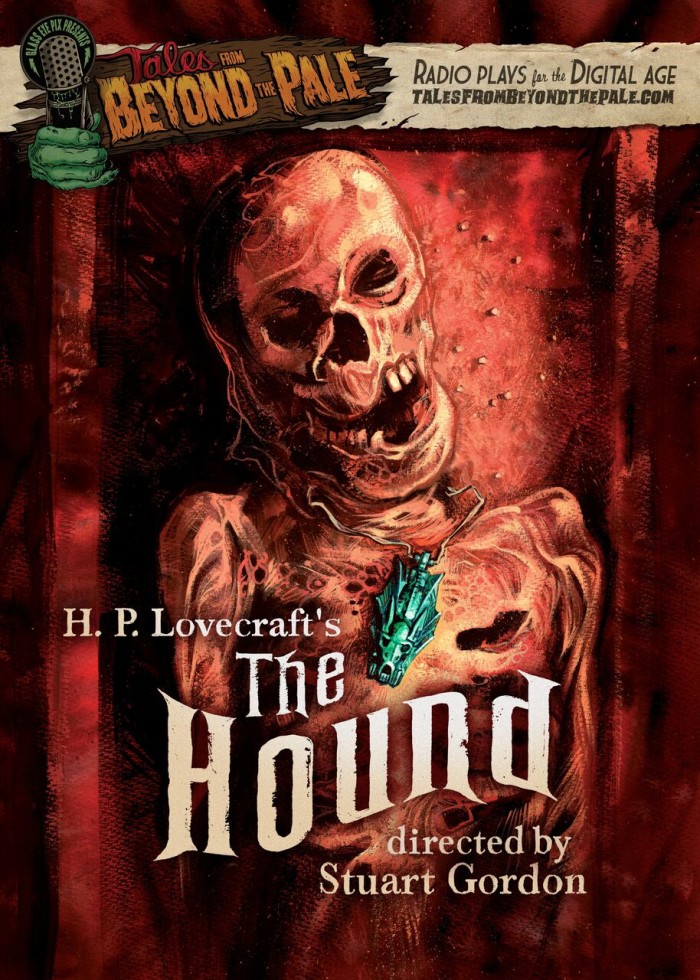
Released November 27, 2015
The allure of a jade amulet proves troublesome for two aristocratic grave robbers.
Writer & Director: Stuart Gordon & Dennis Paoli
Cast: Barbara Crampton, Ezra Godden, Chris McKenna, Glenn McQuaid and Larry Fessenden
Crew: Dennis Paoli (Writer), Stuart Gordon (Director), Glenn McQuaid (Edit & Sound Design), Richard Band (Music), Shaun Brennan (Foley), Tom Efinger (Mix), Colin Thibadeau (Additional Mixing), Rebekah Brown (West Coast Producer), Digital Post Services (Recording Service), Martin Quinones (Recordist), Eric M. Klein (Post Sound Supervisor), Iris Posada (Record Stage Scheduler)
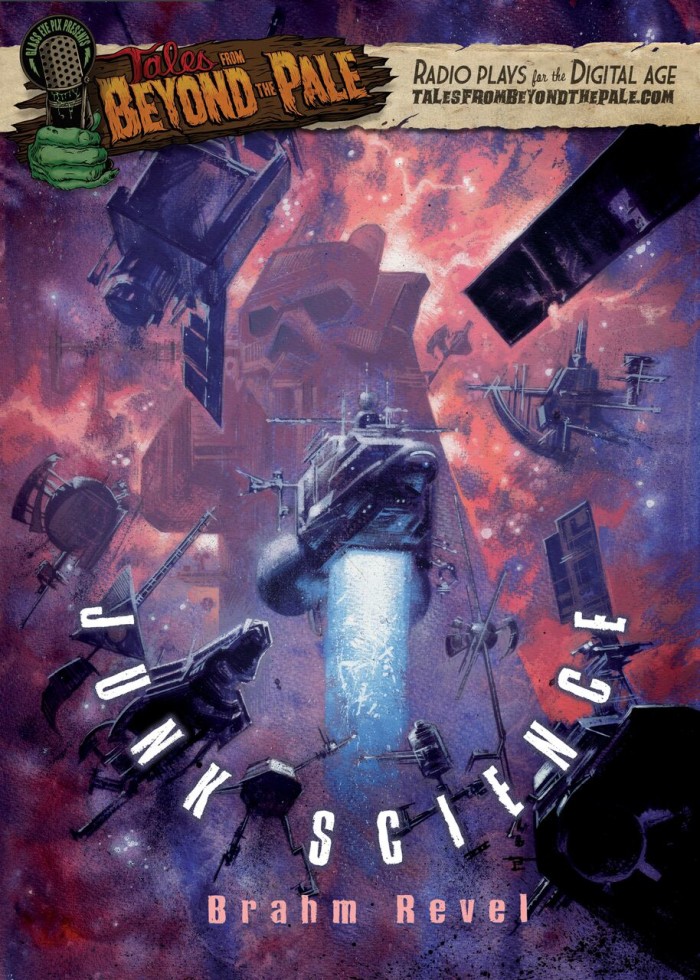
Released November 27, 2015
Space can be a lonely place. For Pike and his computer AL, friendship may mean the difference between life and death.
Writer & Director: Brahm Revel
Cast: Nick Damici, Michael Cerveris, Alison Wright and Kareem Savinon
Crew: Brahm Revel (Writer, Director and Edit), John Moros (Sound Design), Glenn McQuaid (Sound Design and Music), Colin Thibadeau (Mix), Recorded at Digit Audio, Inc NYC, Tom Efinger (Recordist), George Mazur (Additional Sound Effects)
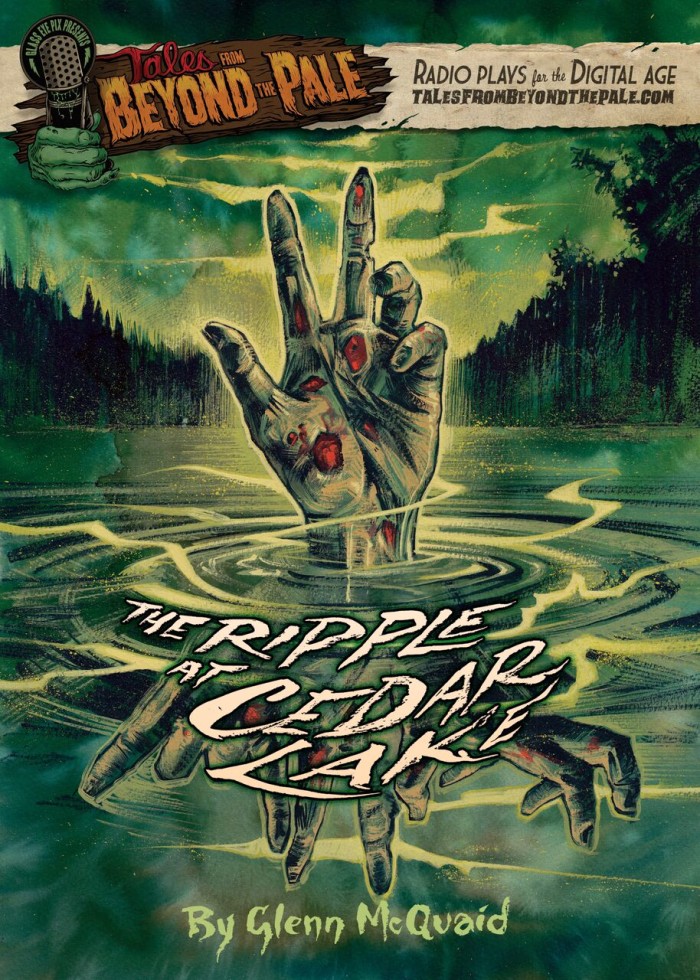
Released November 27, 2015
A scientist, his wife and his lover get in over their heads in this 1950’s crime of passion set within the multiverse.
Writer & Director: Glenn McQuaid
Cast: Hanna Cheek, John Speredakos, Matthew Stephen Huffman and Larry Fessenden
Crew: Glenn McQuaid (Writer, Director, Edit, Sound Design and Music), Shaun Brennan (Foley), Tom Efinger (Mix), Recorded at Landing Site, Lee Nussbaum (Recordist)
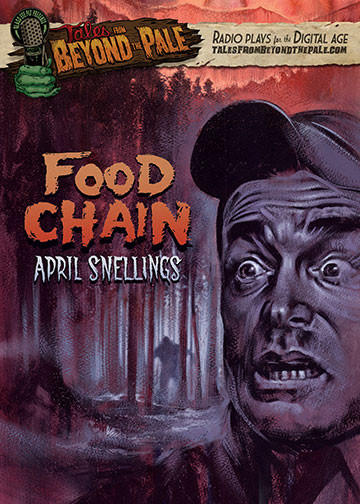
Released November, 27 2015
Four hunters set out to trap the elusive Big Foot but it’s not long before the hunters become the hunted.
Writer: April Snellings
Cast: Larry Fessenden, Jeremy Gardner, Drew Moerlein, Jason Yachanin, Sean Young, Lauren Ashley Carter & Glenn McQuaid
Crew: April Snellings (Writer), Larry Fessenden (Director, Edit and Sound Design), Eric Kaye (Music), Shaun Brennan (Foley), Kevin Dawkins (Foley Recordist), Tom Efinger (Mix and Recordist), Jeff Hinton (Additional Mixing), Colin Thibadeau (Additional Mixing), Digit Audio, Inc NYC (Recorded at), George Mazur (Additional Sound Editing)
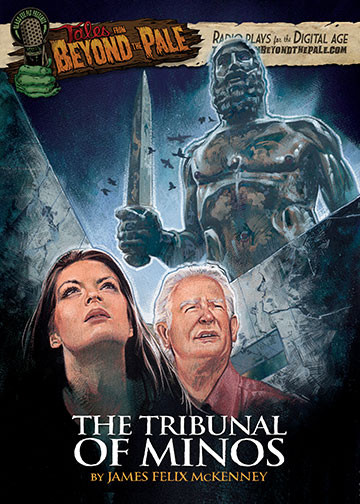
Released November 27th, 2015
Two Americans traveling in Greece find themselves in a mysterious labyrinth haunted by ancient myths and recent memories.
Writer & Director: James Felix McKenney
Cast: Mizuo Peck & Angus Scrimm
Crew: James Felix McKenney (Writer, Director, Edit and Sound Design), Carrie Bradley (Music), Tom Efinger (Mix), Lisa Wisely (Upstate Producer), Lee Nussbaum (Recordist), Landing Site (Recorded)
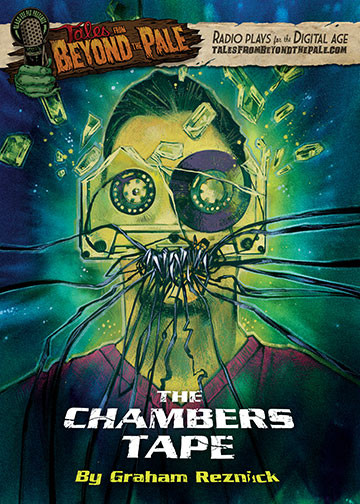
Released November 27th, 2015
Life got you down? We have just the tonic! Relax, breathe deeply and close your eyes. Let the calming effects of The Aviary work its magic on you.
Writer & Director: Graham Reznick
Cast: Misha Collins, Lawrence Michael Levine, Sophia Takal & Kersten Haile
Crew: Graham Reznick (Writer, Director, Edit, Music, Sound Design, Mix & Recordist), Monkeyland Audio (Recorded at), Rob Embrey (Studio Manager/Scheduler), Digital Post Services (Additional Recording), Martin Quinones (Recordist), Eric M. Klein (Post Sound Supervisor), Iris Posada (Record Stage Scheduler)
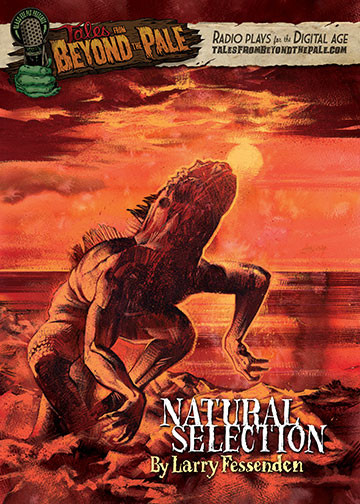
Released November 27th, 2015
On the path to find a new species in the storied Galapogos Islands, a TV Naturalist and his cameraman encounter terrors in the night.
Writer & Director: Larry Fessenden
Cast: Dominic Monaghan, Billy Boyd, James Ransone, Pat Healy & Darroch Greer
Crew: Larry Fessenden (Writer, Director, Edit & Sound Design), John Moros (Additional Sound Design), Jeff Hinton (Mix), Rebekah Brown (West Coast Producer), The Strangers (Theme Music), Graham Reznick (Drones), Jeff Hinton (Mix), Digital Post Services (Recorded), Martin Quinones (Recordist), Eric M. Klein (Post Sound Supervisor), Iris Posada (Record Stage Scheduler)
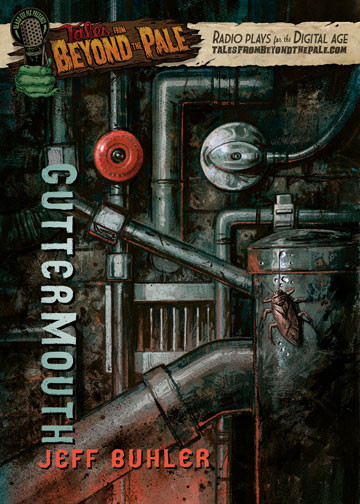
Released November 27th, 2015
Martin hears strange voices coming from the drain. Passion, obsession and madness collide when he investigates.
Writer & Director: Jeff Buhler
Cast: Joshua Leonard, Heather Goldenhersh, Molly Bryant, Mark Kelly and Rocco Buhler
Crew: Jeff Buhler (Writer & Director), Glenn McQuaid (Edit, Sound Design & Music), Colin Thibadeau (Mix), Rebecca Hughes (West Coast Producer), Digital Post Services (Recorded), Martin Quinones (Recordist), Eric M. Klein (Post Sound Supervisor), Iris Posada (Recorded Stage Scheduler)
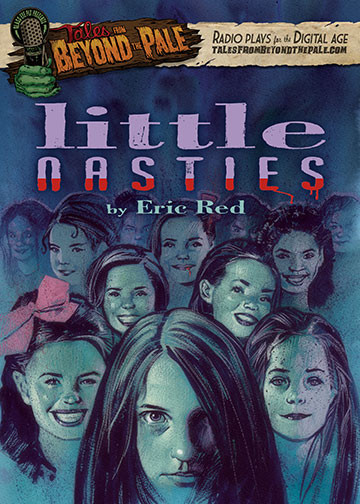
Released November 27th, 2015
Things are not quite as they seem when Heather Knox and her daughter, Bethany, arrive at a child beauty pageant, after dark…
Cast: Jill Zarin, Jack Ketchum, Elia June Conroy, Sophia Anne Caruso, Hanna Cheek, Accalia Quintana, Helen Herbert, Sera Bullis, Demi Mills, John Speredakos & Chris Skotchdopole
Crew: Eric Red (Writer & Director), Jacopo Penzo (Edit and Additional Sound), Larry Fessenden (Sound Design), Tom Efinger (Mix), Digit Audio, Inc NYC (Recorded), Jeff Hinton (Additional Sound and Recordist), Eric Kaye (Music Supervisor), The Diner (Music Courtesy), Lois Drabkin, CSA (Casting)
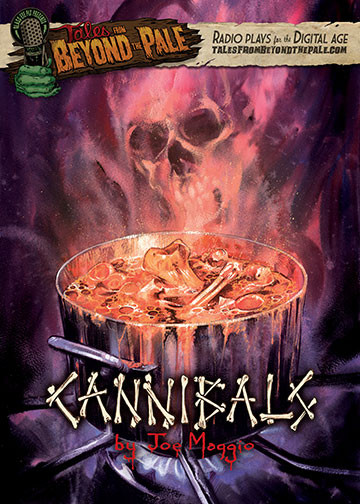
Released November 27th, 2015
An embittered auteur encounters the young filmmaker who has been cannibalizing his work, a game of cat and mouse ensues.
Cast: Vincent D’Onofrio & James Le Gros
Crew: Joe Maggio (Writer, Director and Sound Design), Ilya Chaiken (Edit), Glenn McQuaid (Sound Design and Music), Shaun Brennan (Foley), Kevin Dawkins (Foley Recordist), Jeff Hinton (Mix and Recordist), Colin Thibadeau (Mix), Digit Audio, Inc NYC (Recorded)

Larry Fessenden – (Food Chain, The Hound) The director of the art-horror films NO TELLING, HABIT, WENDIGO, THE LAST WINTER and BENEATH. He is a producer on dozens of projects in and out of the horror genre including STAKE LAND, THE HOUSE OF THE DEVIL and THE COMEDY as well as the audio series TALES FROM BEYOND THE PALE, created with Glenn McQuaid.

Vincent D’Onofrio – (Cannibals) An accomplished character actor, he has been referred to as “The Human Chameleon” and is often called an “actor’s actor”. He is known for his roles as Gomer Pyle in the war film FULL METAL JACKET, Edgar and the alien in MEN IN BLACK, and Detective Robert Goren in the crime television series LAW & ORDER: CRIMINAL INTENT. D’Onofrio is currently cast as Wilson Fisk in the Netflix series DAREDEVIL, based on the Marvel comics series.

Sean Young – (Food Chain) Internationally acclaimed star of Screen, Television and Stage Sean Young has starred in over three dozen feature films, including such box office hits as “BLADE RUNNER”, “NO WAY OUT”, “ACE VENTURA PET DETECTIVE”, “COUSINS”, “WALL STREET” and “DUNE”. She has been fortunate to have worked with several of the most accomplished directors in the industry including Robert Altman, Harold Becker, Roger Donaldson, James Ivory, David Lynch, Gary Marshall, Ismail Merchant, Carl Reiner, Ivan Reitman, Ridley Scott, Tom Shadyak, Joel Shumacher, Oliver Stone and Gus Van Sant.

Dominic Monaghan – (Natural Selection) An English actor who is best known for his role in the movie adaptations of “Lord of the Rings”. Before that, he became known in England for his role in the British television drama Hetty Wainthropp Investigates (1996) and eventually starring in the hit television series LOST.

Angus Scrimm – (The Tribunal of Minos) The 6′ 4″ evil screen villain Angus Scrimm, most famous as “The Tall Man” in the cult classic film, PHANTASM and its sequels. He also has appeared in several Glass Eye Pix films such as; THE OFF SEASON, AUTOMATONS, I SELL THE DEAD and SATAN HATES YOU.
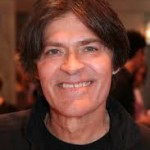
Jack Ketchum – (Little Nasties) He published his first novel in 1980 titled “Off Season”, a version of the Sawney Beane story. The novel was subsequently slated by the Village Voice as ‘violent pornography’ but, undeterred, the author continued to write fiction that deals with the cruelty and violence so often apparent in everyday life. Since the publication of “Off Season”, he has released several successful novels including “She Wakes”, “Cover”, “Road Kill” (aka “Joyride”), “Only Child” (aka “Stranglehold”), “Ladies Night”, and “Triage” (a collection of novellas) with fellow writers Richard Laymon and Edward Lee. In 1990 he published “Offspring”, the sequel to “Off Season”. Before becoming a full-time writer Jack had written and directed a handful of plays, worked as a teacher, a copywriter, and as literary agent for author Henry Miller, while working at Scott Meredith, Inc. His fiction – with the exception of “She Wakes” – has tended to eschew what is called traditional horror

Billy Boyd – (Natural Selection) A Scottish actor best known for his role in the LORD OF THE RINGS trilogy.

Barbara Crampton – (The Hound) A Long Island born actress, Barbara achieved her greatest enduring cult popularity as sweet college coed “Megan Halsey” in Stuart Gordon’s terrific RE-ANIMATOR. She gave an excellent performance as the ambitious, but prim and repressed “Dr. Katherine McMichaels” in the equally fine FROM BEYOND. Crampton was quite engaging as the perky “Suzie Lynn” in the fun CHOPPING MALL and typically solid as the unhappy “Susan Reilly” in CASTLE FREAK. Her impressive cult career was hand in hand with horror icon Stuart Gordon, but she also gave her audience a great performance in cult film directed by horror prodigy Adam Wingard, YOU’RE NEXT.

James Le Gros – (Cannibals) Minnesota born James has been featured in multiple Glass Eye projects including BITTER FEAST and THE LAST WINTER. Otherwise he can be seen in POINT BREAK, ENEMY OF THE STATE, and the television series JUSTIFIED and the mini-series MILDRED PLACE.

Nick Damici – (Junk Science) Nick Damici wrote and starred in the feature films Mulberry Street (2007) and Stake Land (2010), both of which were directed by Jim Mickle. Damici’s third feature film as a writer, We Are What We Are (2013), premiered at the Sundance Film Festival, 2013, and was bought by EOne. Nick’s breakout role as an actor was as the co-lead opposite Mark Ruffalo and Meg Ryan in the Jane Campion feature, In the Cut (2003). He also played supporting roles in the feature films, World Trade (2006) and Premium Rush (2012). In television, Nick is known for his recurring roles on both CSI: NY and The Black Donnelleys. He has also Guest Starred on Life on Mars and Law & Order.

John Speredakos – (The Ripple at Cedar Lake) A Glass Eye legend who has appeared in WENDIGO (as Otis), Ti West’s THE ROOST and, briefly, in Larry’s upcoming THE LAST WINTER. Other film work includes INSIDE MAN (dir. Spike Lee), FANTASTIC FOUR, RULES OF ENGAGEMENT (dir. William Friedkin), SCHOOL TIES, JERSEY GIRL, TOWN DIARY, and THE TRADE. John plays a starring role in the upcoming indie film UNCONSCIOUS, directed by Brad Wigor. Numerous television credits include a recurring role on Denis Leary’s “Rescue Me”, and recent work on “Law & Order”, “Law & Order CI”, and “Law & Order SVU”. John was directed by Sidney Lumet in “100 Centre Street”, was a series regular on Oprah Winfrey’s “Brewster Place” and ABC’s “Sirens”, and played Buck in the CBS mini-series “Return to Lonesome Dove”. Other TV roles include “Queens Supreme”, “Education of Max Bickford”, “New York Undercover” and “Far East” (PBS). His stage work includes Broadway (‘A View from the Bridge’), the national tour of ‘Death of a Salesman’ (with Hal Holbrook), and numerous off-Broadway productions including last summer’s NY Fringe Festival premier “This Won’t Take Long” by David M. Korn.

Lauren Ashley Carter – (Food Chain) Already nearly a veteran in the cultish realm of dark cinema, Lauren has starred in such films as the 2011 Sundance Festival favorite, “The Woman,” by writer/director Lucky McKee, and the wildly anticipated “Jug Face,” which won her the best acting award at the Nocturna Film Festival in Madrid, Spain, which premiered theatrically in the U.S., late summer of 2013. Lauren can also be seen in “Premium Rush,” with Joseph Gordon Levitt, “The Prodigies,” and “Rising Stars.” Lauren’s theatrical credits include, Off-Broadway: “Night Sky,” “Any Given Monday” (59th e. 59th st.). Regional: Lewis Black’s “One Slight Hitch,” at the George St. Playhouse in New Brunswick, NJ, which she later reprised, summer 2013 at the Well Fleet Harbor Theatre in Cape Cod. Carter also starred in Glass Eye’s most recent film DARLING, which has been receiving praise from many critics and fans.

Joshua Leonard – (Guttermouth) A Los Angeles based actor/writer/director who first garnered attention for his memorable role in 1999’s lo-fi thriller THE BLAIR WITCH PROJECT. As an actor Joshua has worked on over thirty films and a number of television shows, including such prestigious projects as Alison Ander’s THINGS BEHIND THE SUN, HBO’s LIVE FROM BAGHDAD and HUNG and Fox’s MEN OF HONOR. Most recently he had a recurring role in Showtime’s UNITED STATES OF TARA and starred in Lynn Shelton’s HUMPDAY, which won the special Jury prize at Sundance, National Board of Review’s Top Ten Independent Films of 2009 and Best Actor at the Gijon International Film Festival. He is currently acting opposite Vera Farmiga in her directorial debut, HIGHER GROUND.

Mizuo Peck – (The Tribunal of Minos) A New York actress known for Night at the Museum (2006), Night at the Museum: Battle of the Smithsonian (2009) and Night at the Museum: Secret of the Tomb (2014) as the role of Sacajawea.

Misha Collins – (The Chambers Tape) An actor known for his roles in films such as Girl, Interrupted. He also appeared in numerous television programs such as Supernatural, 24, Nip/Tuck, ER, etc)

Jill Zarin – (Little Nasties) She is an actress, best known for the hit reality show The Real Housewives of New York City (2008). She also appeared on The 9th Annual TV Land Awards (2011) and A-List Awards (2008).

Michael Cerveris – (Junk Science) He is an actor, known for The Mexican (2001), Cirque du Freak: The Vampire’s Assistant (2009) and Stake Land (2010). He also returned to Glass Eye to act in the Stake Land Webisode “Jebediah”, directed by Larry Fessenden. Michael is no stranger to Tales From Beyond The Pale, he was featured The Demon Huntsman (Season 1) and Dead Man’s Shoes (Season 2).

James Ransone – (Natural Selection) Is an actor known for his roles in SINISTER 1 & 2. He attended Carver Center for Arts and Technology in Towson, Maryland from 1993-1997. The school is a “magnet school” that allows students to specialize in subjects such as theater, dance, writing, fine arts, and film as well as all the required academic classes. Ransone specialized in theater, then changed majors to fine arts and graduated in 1997. he currently lives in NYC.

Pat Healy – (Natural Selection) A Chicago born actor and writer, known for MAGNOLIA, CAPTAIN AMERICA: THE WINTER SOLDIER and RESCUE DAWN. He was also in a Glass Eye favorite, THE INNKEEPERS.

Jeremy Gardner – (Food Chain) Jeremy Gardner is an actor and director. He is known for acting and directing his first feature film The Battery (2012). He also directed and starred in the comedy film Tex Montana Will Survive! (2015).

Heather Goldenhersh – (Guttermouth) She is an actress, known for School of Rock (2003), Kinsey (2004) and The Merchant of Venice (2004).

LARRY FESSENDEN, Curator, Producer – Is the director of the art-horror films NO TELLING, HABIT, WENDIGO, THE LAST WINTER and BENEATH. He is a producer on dozens of projects in and out of the horror genre including STAKE LAND, THE HOUSE OF THE DEVIL, I SELL THE DEAD, THE COMEDY, and WENDY AND LUCY as well as the audio series TALES FROM BEYOND THE PALE, created with the mad Irishman Glenn McQuaid. Fessenden has operated Glass Eye Pix since 1985 with the mission of supporting individual voices in the arts.

GLENN McQUAID, Curator, Producer – Writer director Glenn McQuaid was born and raised on the North side of Dublin. McQuaid’s first Collaboration with Larry Fessenden came about when he coordinated the visual effects on THE ROOST. Since then he has worked on several of Glass Eye Pix productions including THE LAST WINTER, HOUSE OF THE DEVIL and STAKELAND. McQuaid’s feature debut I Sell the Dead was a festival favorite that sold to IFC and is currently available to rent or buy at all decent retailers. He is currently curating TALES FROM BEYOND THE PALE, and developing various feature projects.
